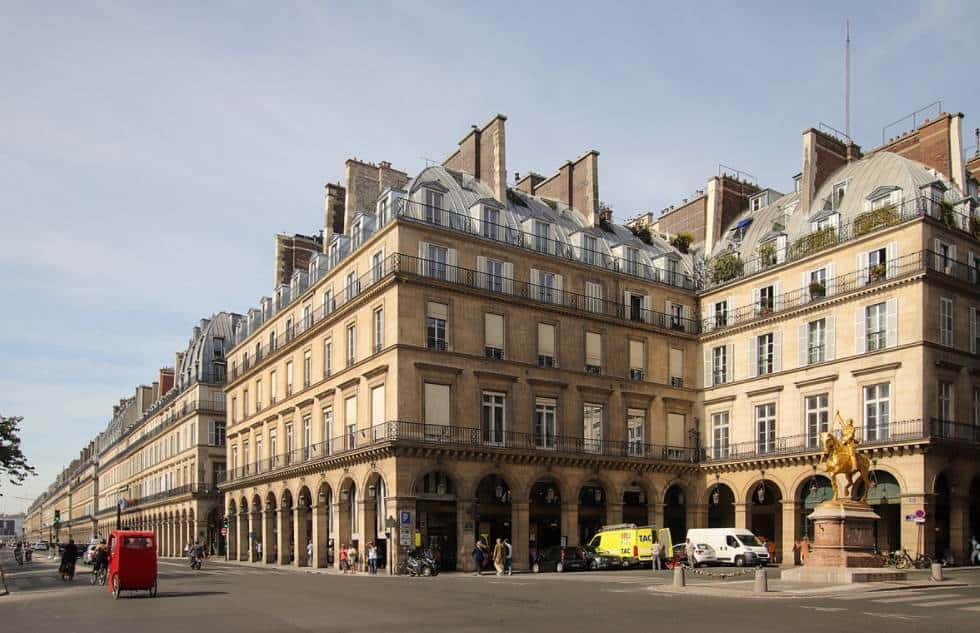Paris is one of those cities that make you feel as if you’re walking into history lane. Every building appears to be telling you a story.
The original settlement that would become this fascinating city was first mentioned by Julius Caesar who referred to it as “Luteciam Parisiorum” or “Lutetia of the Parisii,” with Parisii referring to the Gallic tribe that lived here.
The city was known as Lutetia in the Roman Empire and eventually grew to become one of the most important cities in Europe, mainly because of its strategic location and the River Seine that flows through it.
Paris is known as “La Ville Lumière” or the “City of Light.” This is a reference to both its importance during the Age of Enlightenment and the fact that it was one of the first cities in Europe to be illuminated by gas lamps at night.
Today, the city is home to over 2.1 million inhabitants within the city proper and an estimated 12.17 million inhabitants within its metropolitan area. It’s also one of the most-visited cities in the world due to its extremely high concentration of historic buildings and landmarks.
With so many things to do in Paris, we have created a list of the 60 most famous buildings in Paris, architectural wonders that you absolutely must see when you visit France’s capital.
1. Eiffel Tower
The Eiffel Tower isn’t just a symbol of Paris and France, it’s one of the best-recognizable towers in the entire world. It’s located on the “Champ de Mars” in the 7th arrondissement of Paris.
The tower was named after its designer, Gustave Eiffel, and stands about 324 meters (1,063 feet) tall.
This is the equivalent of an 81-story skyscraper. Upon completion in 1889, the tower was the tallest building in the world and held this record for 41 years, until 1930 when it was surpassed by the Chrysler Building.
The Eiffel Tower is one of the most popular tourist attractions and historical sites in all of Paris and allows visitors to access the tower on 3 levels.
The third level is located at a height of 276 meters (906 feet) above the ground and provides astounding views of the city of Paris.
Official website: Tour Eiffel
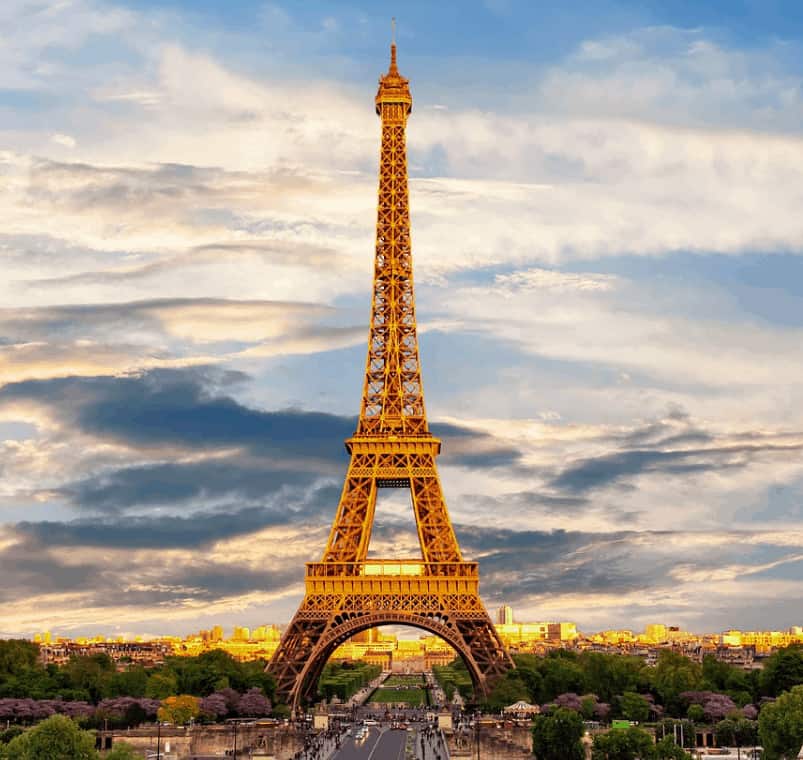
2. Arc de Triomphe
The Arc de Triomphe is the most famous triumphal arch in the world.
It’s located at the center of the “Place Charles de Gaulle” which was formerly known as the “Place de l’Étoile.” Therefore, the full name of the arch is “Arc de Triomphe de l’Étoile.”
There are 12 large avenues in Paris coming together at its location and it’s located at the center of the “Axe Historique” of Paris.
This is the central axis containing numerous historical buildings and monuments in the city and the best place to start your journey in the city.
The Arc de Triomphe commemorates those who fought during the French Revolution and the Napoleonic Wars in the late 18th and early 19th centuries.
The arch was inspired by the Arch of Titus, a famous monument and attraction in Rome. It stands 50 meters (164 feet) tall, is 45 meters (148 feet) wide and has a depth of 22 meters (72 feet).
Official website: Arc de Triomphe
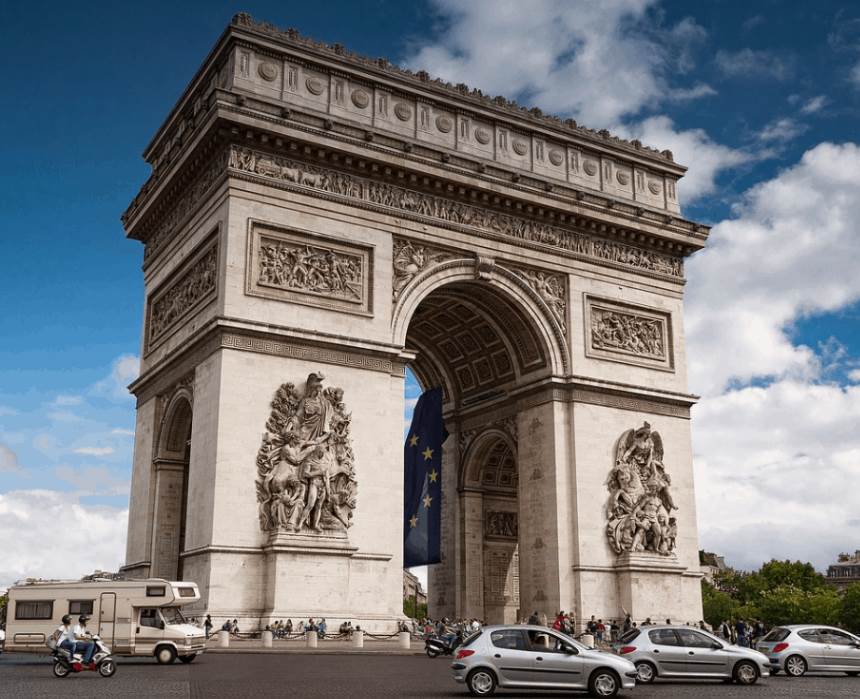
3. Louvre Museum
The Louvre Museum is the largest art museum in the world, located in a historic building called the “Louvre Palace,” which used to serve as the royal residence for the kings of France.
After you enter the museum through the iconic Louvre Pyramid, there are about 38,000 artworks on display for you in a total area of 72,735 square meters (782,910 square feet).
This makes it virtually impossible to see everything in just one day.
The museum opened its doors on August 10, 1793, and had just 537 paintings on display at the time.
The collection was seriously increased during the reign of Napoleon Bonaparte and his successors and was briefly called the “Musée Napoleon.”
It houses the most famous painting in the world, The Mona Lisa, the top painting in Leonardo da Vinci’s oeuvre.
Official website: The Louvre
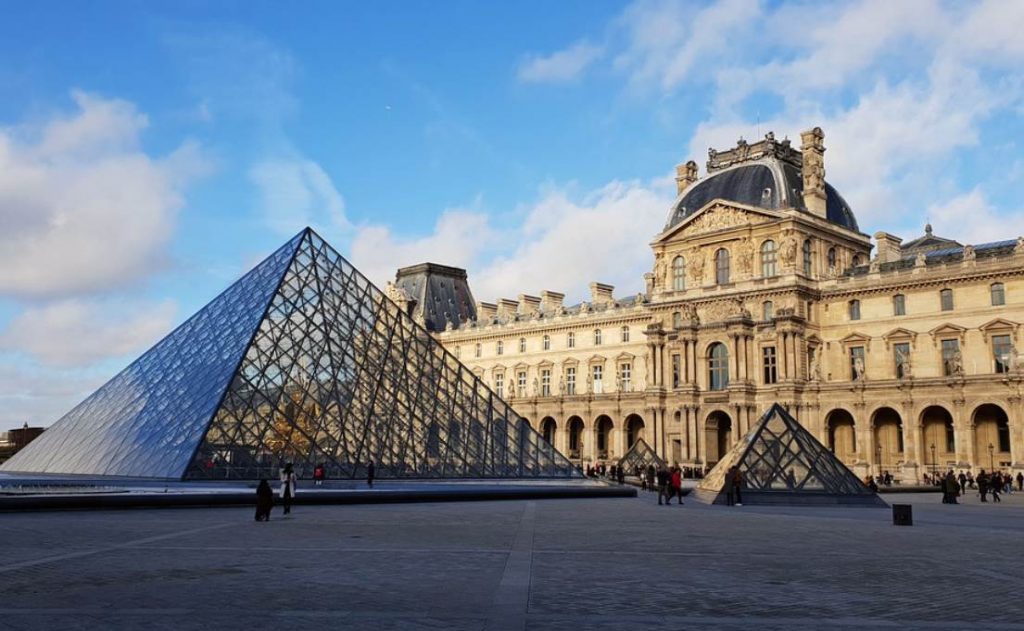
4. Sacré-Coeur
The Sacré-Coeur Basilica, also known as the “Basilica of the Sacred Heart of Paris,” is a Roman Catholic church and one of the most iconic churches in all of Paris.
This must-visit attraction in Paris is located on top of a hill which is the highest point in the city.
Because the construction of the church was supported by donations, it took 39 years to complete, starting in 1875 and finishing in 1919, which is the year that the church was consecrated.
Apart from being a religious building, it also serves as a cultural icon and was constructed with a dual purpose.
This includes the defeat of France in the Franco-Prussian War in 1870 and the lack of morality during the Paris Commune of 1871.
It is now the second most-visited monument in Paris.
Official website: Sacré-Coeur
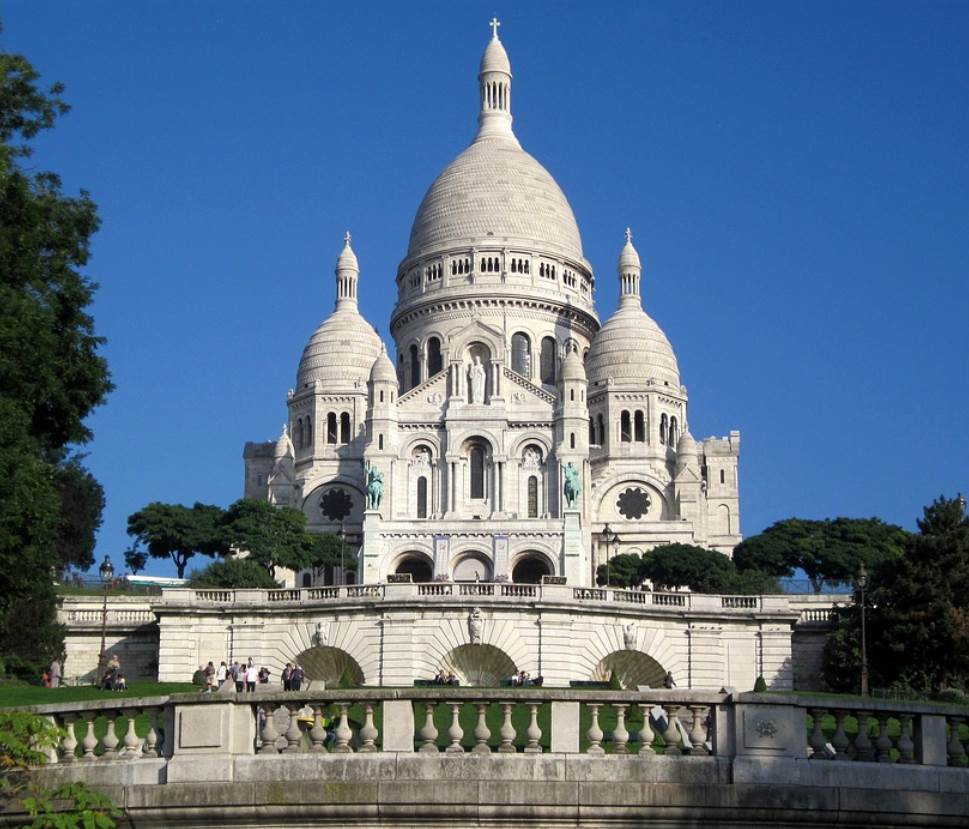
5. Montmartre
Montmartre is a large hill in the 18th arrondissement of Paris and is most famously known for its art district.
The hill itself is about 130 meters (430 feet) high and is the location of the Sacré-Coeur.
The district surrounding Montmartre hill has been classified as a “Historic District of the City of Paris,” and breathes the typical Paris atmosphere.
In this district, numerous famous artists lived and worked here, including Claude Monet, Pierre-Auguste Renoir, Edgar Degas, Henri de Toulouse-Lautrec, Suzanne Valadon, Piet Mondrian, Pablo Picasso, Camille Pissarro, and Vincent van Gogh.
Right now, artists are still painting tourists, so this is the spot to go if want to have an amazing portrait created.
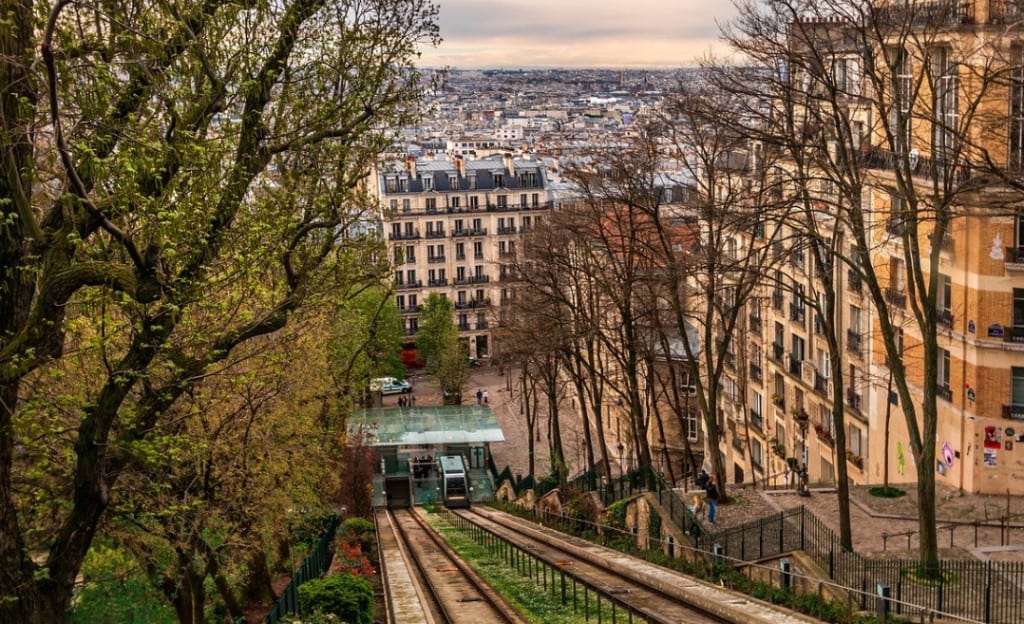
6. Les Invalides
Les Invalides was formerly known as the “Hôtel national des Invalides,” and was originally built as a retirement home for war veterans between 1671 and 1683.
It’s located just near the Eiffel Tower in the 7th arrondissement of Paris, which means it’s the perfect chance to combine these two famous attractions.
Les Invalides consists of a complex of multiple buildings and currently house the Musée de l’Armée, the military museum of the Army of France, the Musée des Plans-Reliefs, and the Musée d’Histoire Contemporaine.
It also has a large church called the “Dôme des Invalides” and is the tallest in Paris, standing 107 meters (351 feet) tall.
Inside the church, you can find the tombs of some of the most notable people in the military history of France, including the most famous man of all, the tomb of Napoleon Bonaparte.
Official website: Musée de l’Armée
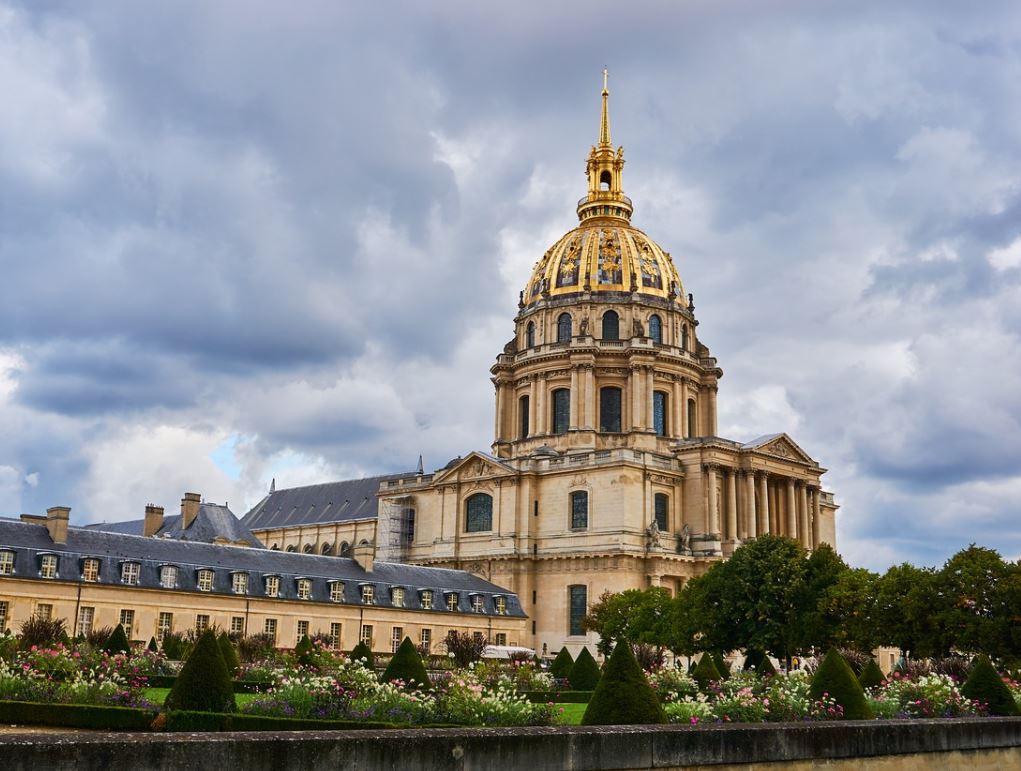
7. Centre Pompidou
The Centre Pompidou is a large complex located in the Beaubourg area in the 4th arrondissement of Paris.
It’s one of the most peculiar buildings in the world which was designed in the high-tech architectural style.
The building was constructed between 1971 and 1977 and was named after Georges Pompidou, the President of France who had commissioned the building, between 1969 and 1974, which was the year he died.
The building houses “IRCAM,” a center for music and acoustic research, the “Bibliothèque Publique d’Information,” a large public library, and most famously, the “Musée National d’Art Moderne.”
This is the largest museum of modern art in Europe which welcomes nearly 4 million visitors every year, definitely worth visiting while you’re in Paris.
Official website: Centre Pompidou
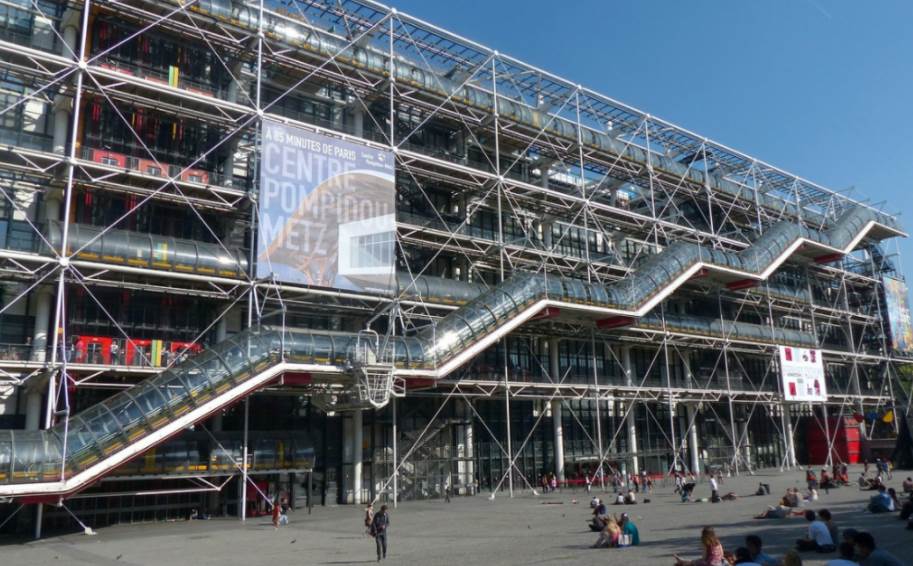
8. Musée d’Orsay
The Musée d’Orsay is another famous art museum in Paris, located right in the historical center of the city on the left bank of the Seine River.
The building used to be a railway station called the “Gare d’Orsay,” but was transformed into a museum in the 1980s.
It’s one of the most popular museums in Europe, welcoming over 3.5 million visitors every year.
The museum houses a remarkable collection of Paintings, mostly French impressionist and post-impressionist art, created between 1848 and 1914.
The pieces of art include paintings, sculptures, furniture, and photography from artists such as Monet, Manet, Degas, Renoir, Cézanne, Seurat, Sisley, Gauguin, and Van Gogh.
Official website: Musée d’Orsay
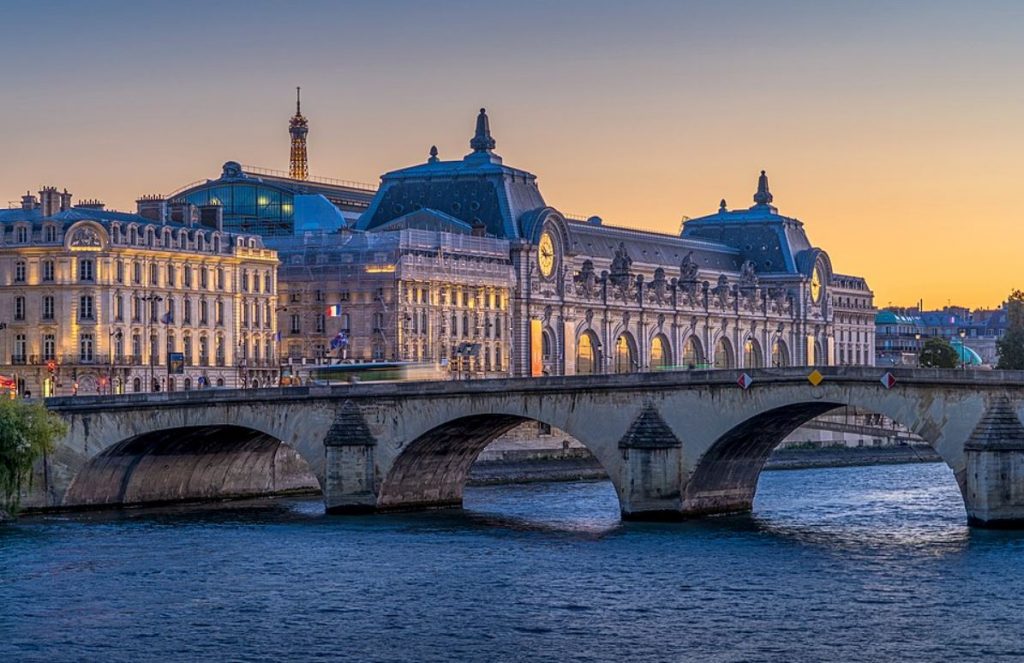
9. Palace of Versailles
The Palace of Versailles is located just outside of Paris, about 20 kilometers (12 miles) to the southwest of the city center.
It used to be the royal residence of France from 1682 until 1789, which is the year that the French Revolution started.
The incredible palace is one of the most luxurious and overwhelming structures ever created and exemplifies why the French Revolution happened.
Everything was built to impress and the sheer size of the building and gardens is unfathomable until you have seen it with your own eyes.
The palace is one of the most-visited tourist sites in all of France, welcoming well over 7 million visitors every year.
It’s also a historical monument and UNESCO World Heritage site and one of the must-visit tourist attractions when you’re in the city.
Official website: Palace of Versailles
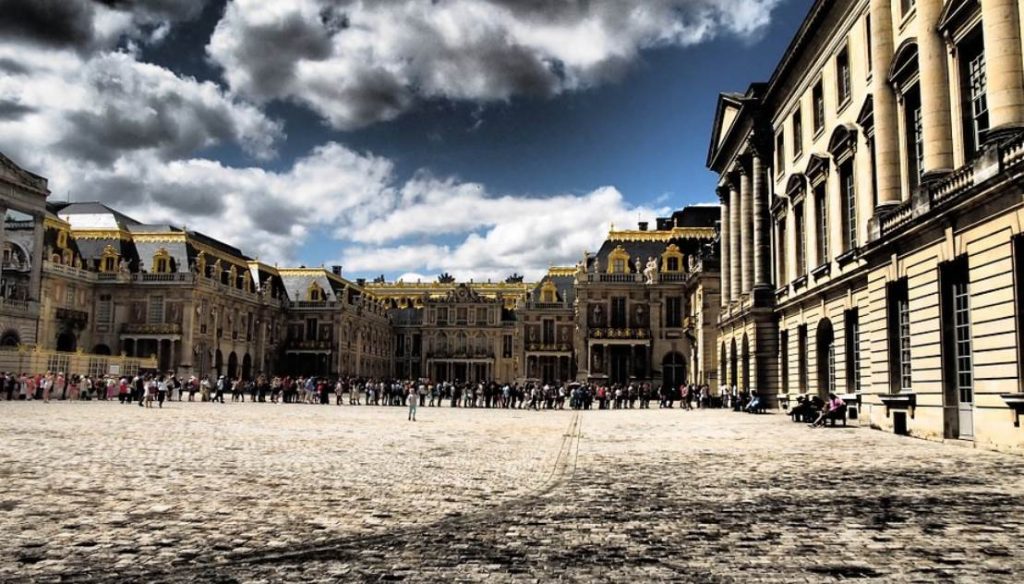
10. Champs-Élysées
The Avenue des Champs-Élysées is one of the main avenues and the most famous street in Paris.
It’s located 8th arrondissement of the city and runs between the Place de la Concorde and the Place Charles de Gaulle, ending at the Arc de Triomphe.
The name of the avenue translates to the “Elysian Fields” which is derived from Greek Mythology and means a “paradise for dead heroes.”
The street is 1.9 kilometers (1.2 miles) long, 70 meters (230 feet) wide, and has huge sidewalks for you to enjoy a stroll in the heart of Paris.
It’s is widely considered to be one of the most famous avenues in the world and is known for its cafés, restaurants, and luxury shops.
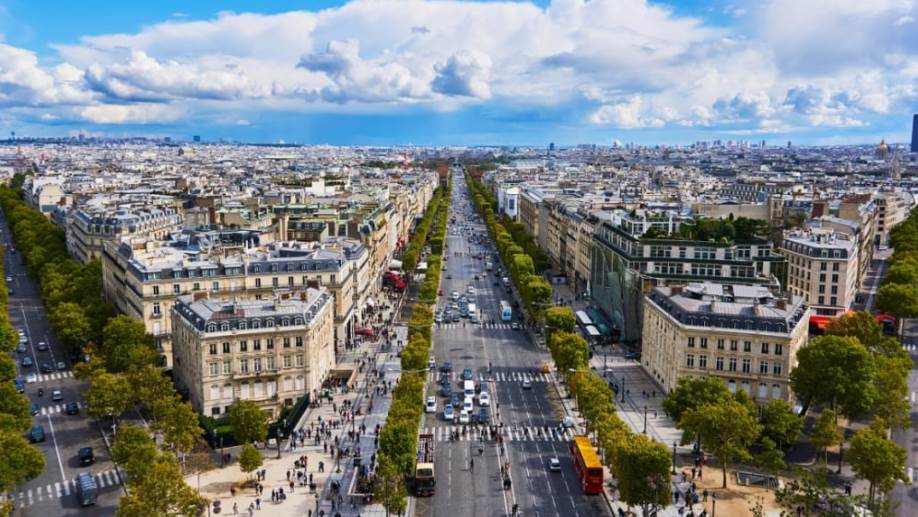
11. Tuileries Garden
The Tuileries Garden is one of the most popular public gardens in Paris and is located right in the city center between the Louvre and the Place de la Concorde in the 1st arrondissement of the city.
The garden dates back to the 16th century, when Queen Consort of France, Italian noblewoman Catherine de’ Medici created it as the garden of the Tuileries Palace in 1564.
The Tuileries Garden was opened to the public back in 1667, and the now-demolished Tuileries Palace played an important role during the French Revolution.
It was briefly called the “Jardin National” after the king was removed from power and remained one of the most popular spots to gather and roam around for Parisians, up until today!
Official website: Tuileries Garden
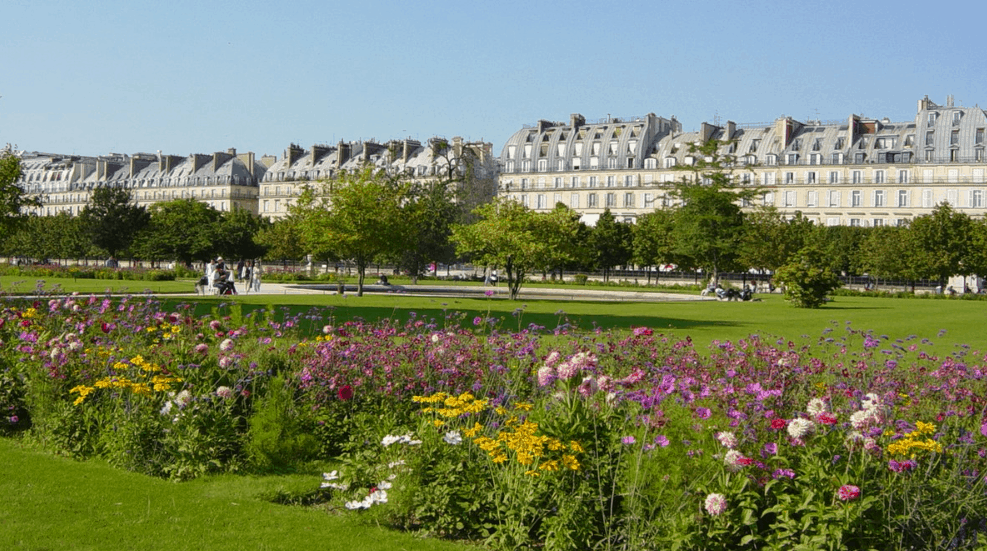
12. Notre-Dame Cathedral
The Notre-Dame Cathedral, which means “Our Lady of Paris,” is commonly known as just the “Notre-Dame.”
It’s one of the most famous Roman Catholic churches in the world and is located on a small river island on the Seine River called “Île de la Cité” in the 4th arrondissement of Paris
Construction of the church started way back in medieval times in 1163 and was completed in 1345.
It’s one of the finest examples of French Gothic Architecture and is abundantly decorated with sculptures.
A lof the religious works of art were damaged during the French Revolution and the church has been the site of the coronation of Napoleon I and the funerals of multiple French Presidents.
The roof of Notre Dame caught fire on April 15, 2019, and left the cathedral severely damaged.
The good news is that reconstruction started in 2021 and is estimated to be completed in 2024.
Official website: Notre Dame de Paris
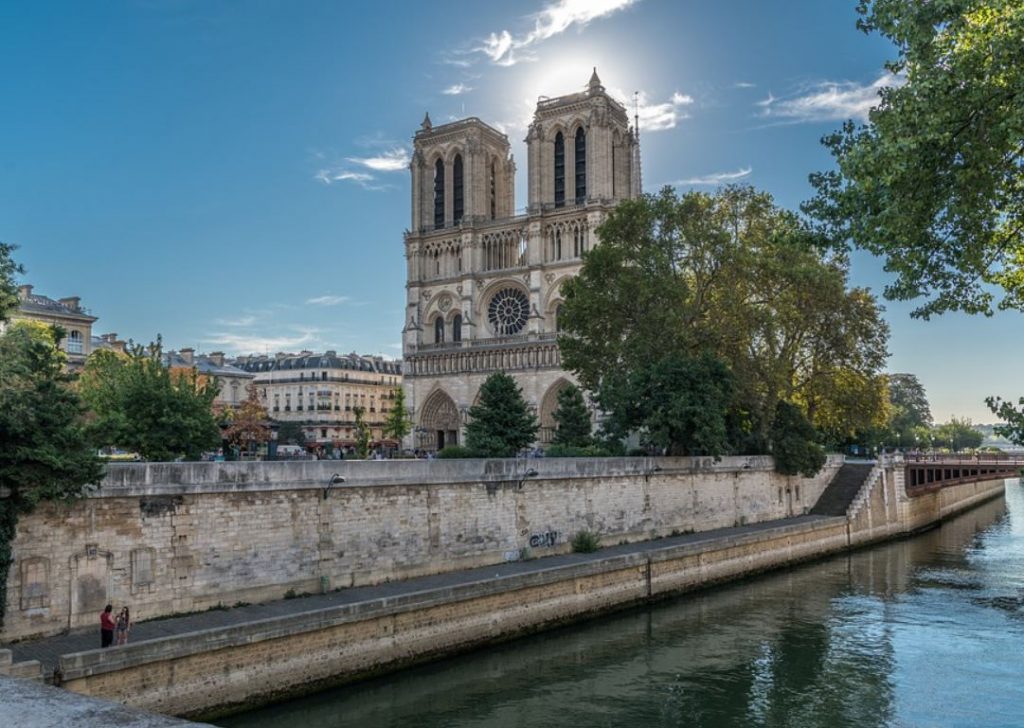
13. Pont Alexandre III
Pont Alexandre III is arguably one of the most beautiful bridges in the world and definitely in the city of Paris.
It’s famous for its amazing decorations such as sculptures and Arts-Nouveaux lamps and has been constructed in the same Beaux-Arts design as the nearby Grand Palais.
The bridge was originally constructed between 1896 and 1900 and was built to commemorate the Franco-Russian alliance that was signed in 1892.
It was named after the Russian Tsar at the time, Tsar Alexandre III. The Tsar had passed away in 1894 so it was his son, Tsar Nicholas II, who was allowed to lay the first stone.
This amazing bridge was completed just before the World Fair of 1900 which was held in Paris that year.
Official website: Pont Alexandre III
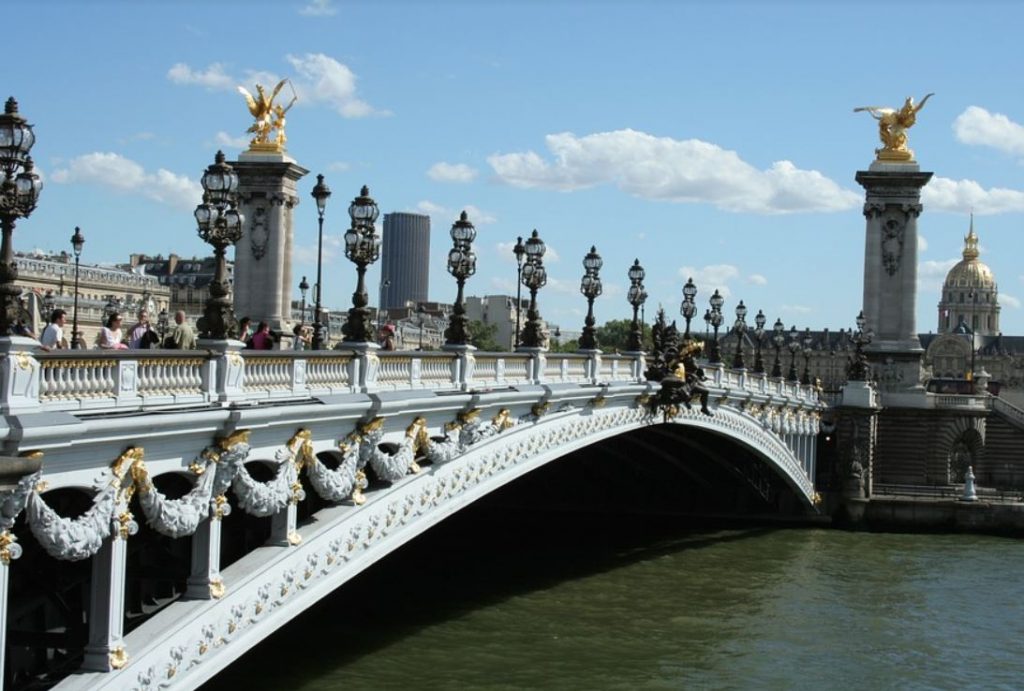
14. Sainte Chapelle
Sainte Chapelle is arguably one of the most beautiful chapels in the world and is world-famous because of its large collection of 13th-century stained glass windows.
What’s remarkable about these is that about 2/3 of the windows are still original, an attraction you simply have to see while you’re in Paris.
The chapel is located inside the courtyard of the Palais de la Cité, the royal residence of the Kings of France until the 14th century.
It was built by King Louis IX to hold his holy relics which he had purchased just before.
The chapel was consecrated in the year 1248 and became one of the most important religious buildings at the time
That’s because it holds some of the holiest relics in all of Christendom until they were moved to the Notre Dame Cathedral.
Official website: Sainte Chapelle
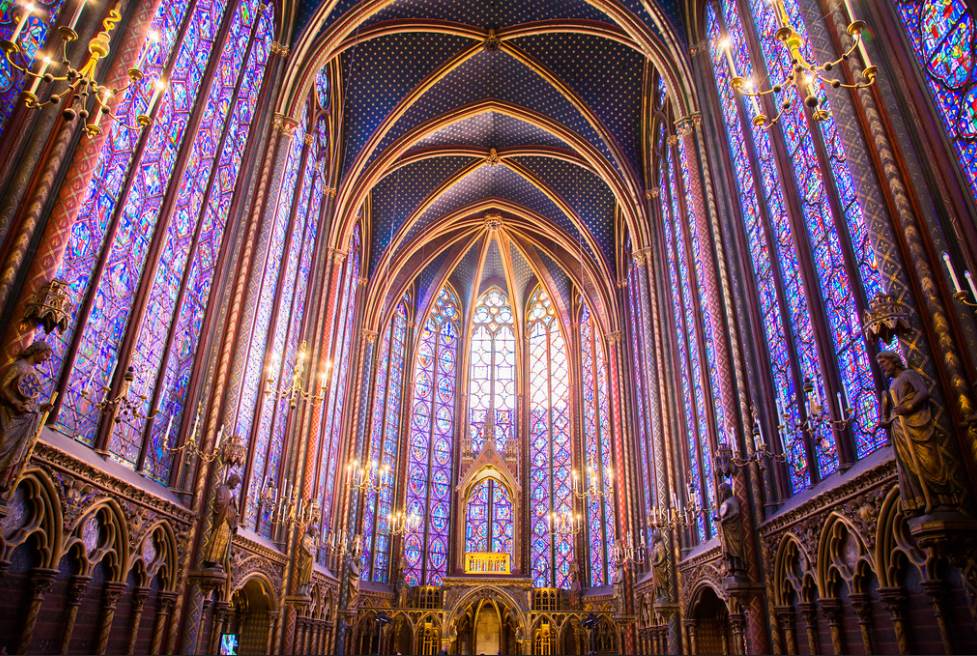
15. Grande Arche
The Grande Arche is one of the most remarkable modern landmarks in the city of Paris.
It was commissioned by French President François Mitterrand in the year 1982 and designed by a Danish architect who had won a design competition.
It was constructed between 1985 and 1989 and was ready just in time for the bicentennial of the French Revolution in July of that year.
This fantastic monument has become a popular tourist attraction and was inaugurated with a massive military parade to commemorate this event.
It stands 110 meters (365 feet) tall and is located right in the heart of the biggest business district in France called “La Défense.”
It’s located right at the end of the famous line of monuments in Paris called the “Axe Historique,” and was designed as a modern version of the famous Arc de Triomphe which it directly faces.
Official website: La Grande Arche
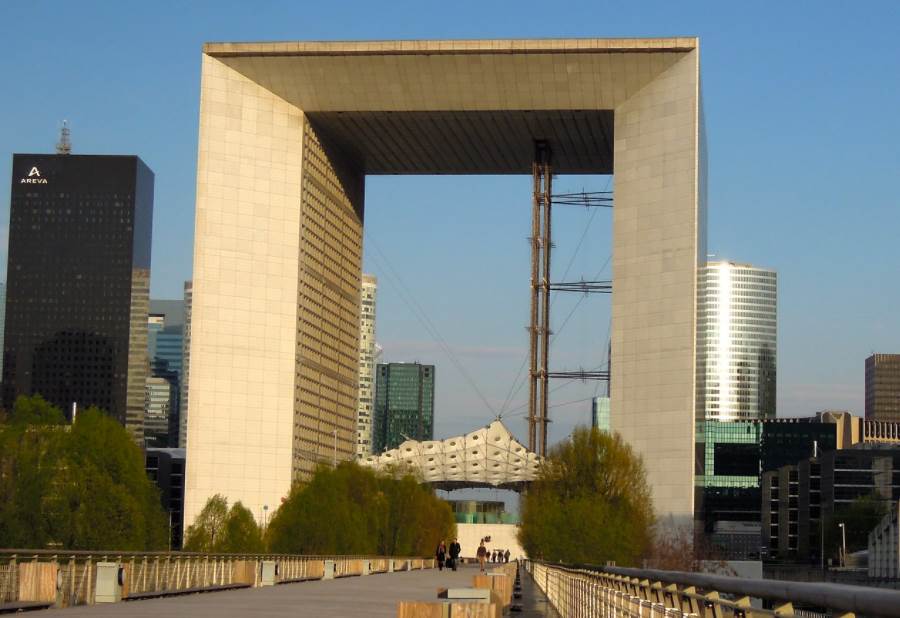
16. Tour Montparnasse
Tour Montparnasse is without a doubt one of the most peculiar buildings in Paris, yet a popular attraction to visit.
This famous skyscraper instantly received heaps of criticism because of its simplistic design and huge size in an area that doesn’t have any tall buildings at all.
The building was constructed between 1969 and 1973 and 2 years after it was completed, and after a lot of protests, a new law was passed
This new law banned the construction of buildings taller than 7 stories in the entire center of Paris.
It’s fair to conclude that Parisians weren’t too fond of what was the tallest skyscraper in the country back then with a height of 210 meters (690 feet).
One of the most amazing things about the tower, though, is that it has an observation deck on its roof which offers a 360-degree view over the city of Paris.
Because of its central and unique location, you can catch some of the city’s most amazing views and its surroundings from the observation deck at Tour Montparnasse!
Official website: Tour Montparnasse
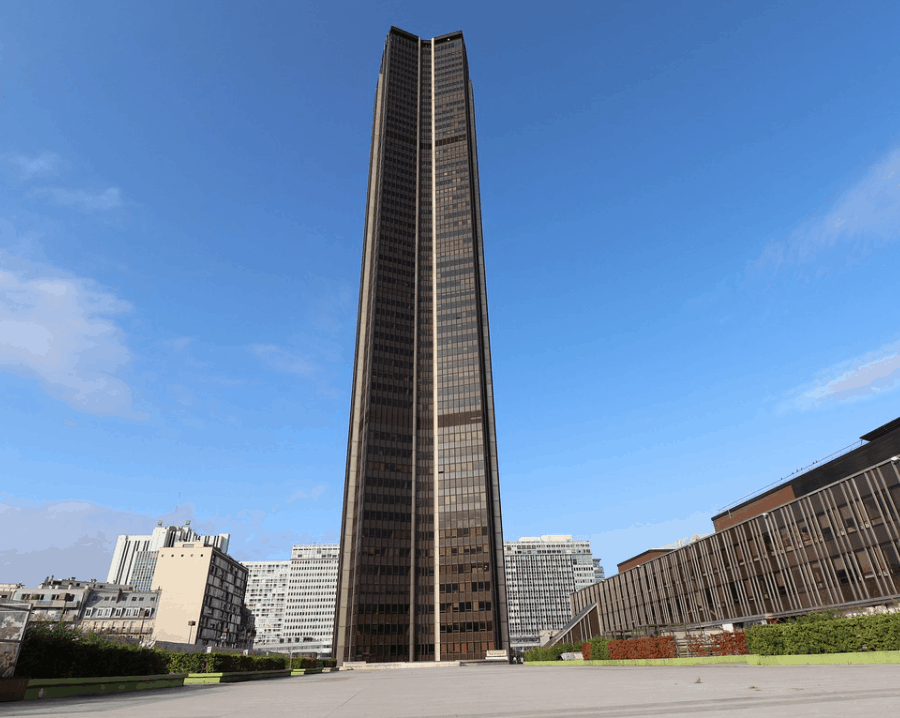
17. Tour Saint-Jacques
The Tour Saint-Jacques is a free-standing tower located in the 4th arrondissement of Paris, right within the historical heart of the city.
It stands in a square that forms an intersection between the famous Rue Rivoli, a famous shopping street, and the Rue Nicolas Flannel.
It stands 52 meters (171 feet) tall and used to be part of a church. This church, the Saint-Jacques-de-la-Boucherie, and named after the butcher’s area in medieval times
It has a remarkable history as it was destroyed during the French Revolution and its materials were sold to the highest bidder.
However, the tower was bought back by the City of Paris in the year 1836 and declared a “Monument Historique” in the year 1862.
The area surrounding the tower was transformed into a public park and has become one of the most popular areas to hang out in Paris!
Official website: Tour Saint-Jacques
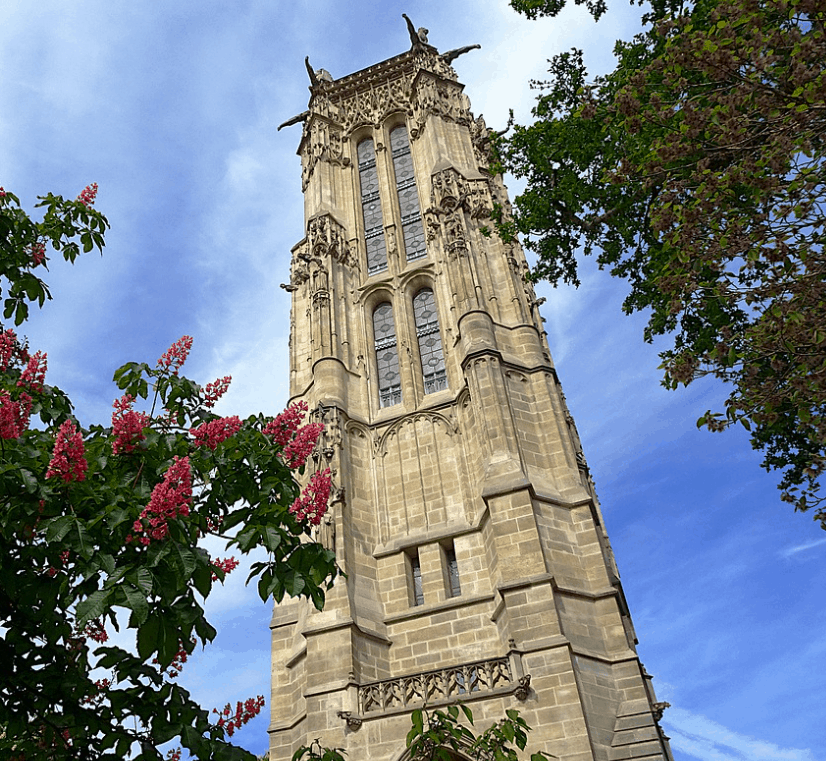
18. Place de la Concorde
The Place de la Concorde is arguably the most famous square in Paris. It’s squeezed in between the Champs-Élysées and the Tuileries Garden, right in the middle of the Axe Historique of Paris.
This historic public space borders the Seine to the south as well and is connected to the Rue Rivoli, another famous avenue in the city.
The square was commissioned by King Louis XV and was originally called the Place Louis XV in his honor as well.
It was constructed between 1755 and 1772 and contains two famous hotels on its north side which were constructed in the typical Style Louis XV by his main architect.
The square is most infamously known for being the location of over 1,200 execution by guillotine during the French Revolution in just 3 years.
These executions included King Louis XVI and his wife Marie Antoinette and numerous members of the royal family.
A huge 3,300-year-old obelisk is located in its center and the square is decorated with fountains as well, making it one of the best-recognized historical sites in Paris!
Official website: Place de la Concorde
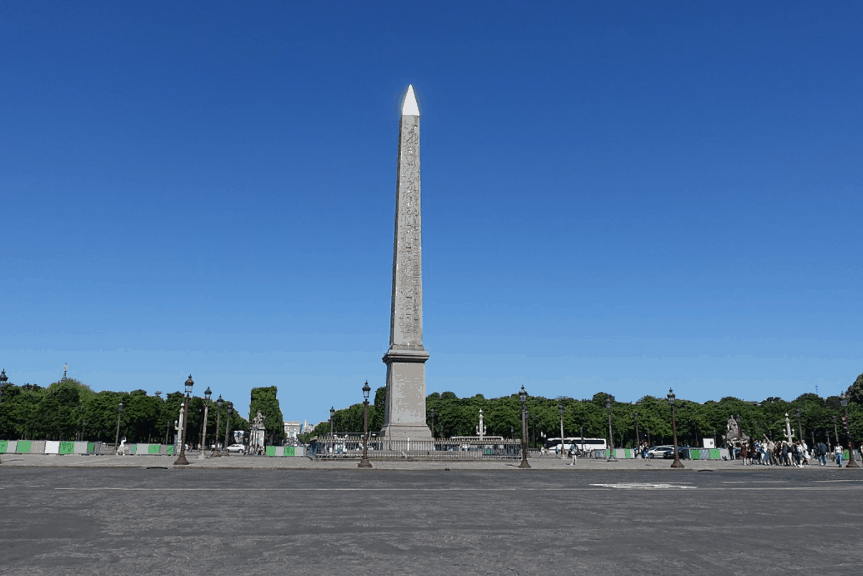
19. Stade de France
The Stade de France is the national football stadium of France, and while it’s not located in the center of the city but rather a commune just north of Paris
This place is called Saint-Denis and is located within the city’s metropolitan area and just behind Montmartre Hill in the north of the city.
The stadium has a seating capacity of 80,698 which makes it one of the largest football stadiums in the world.
It was built especially for the FIFA World Cup of 1998 with construction lasting from 1995 until 1998.
We included it in our list of most famous historical sites in Paris because France wrote history during this tournament as they won the World Cup in their own country and their brand new stadium by beating Brazil 3-0.
The stadium can be used for athletics competitions as well and is frequently used for concerts.
Some of the most famous artists in the world have performed here. It’s one of two stadiums in the world which has been the venue of both a world cup of association football and rugby.
Official website: Stade de France
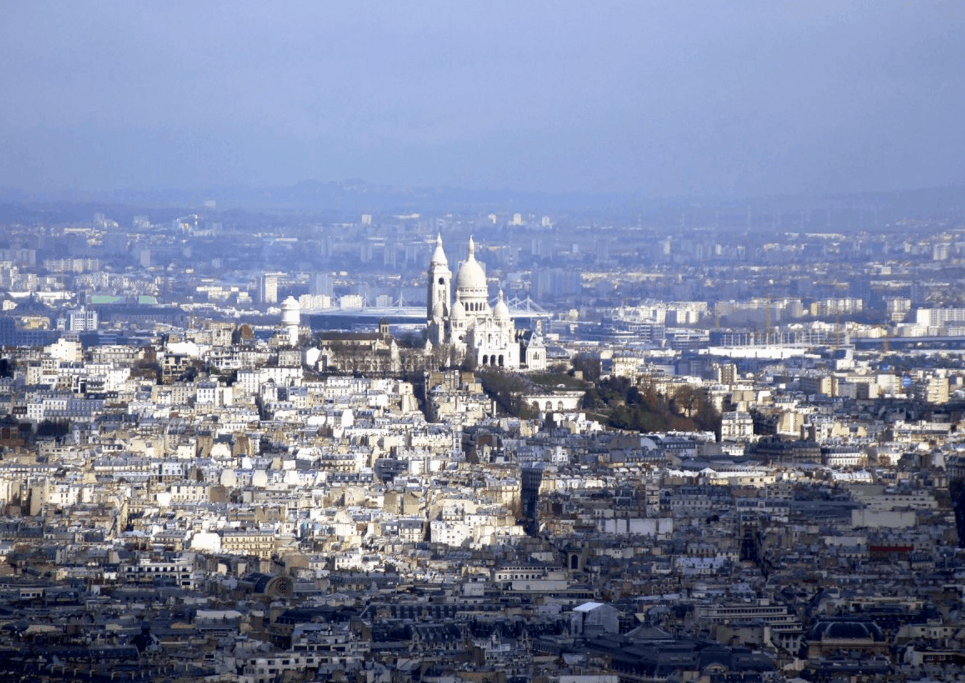
20. Luxembourg Palace
The Luxembourg Palace is located just south of the historic center of the city and is surrounded by one of the most amazing gardens in Paris referred to as the “Jardin de Luxembourg” or “Luxembourg Garden.”
It was commissioned by Marie de Medici after her husband, King Henry IV, had died in 1610.
The construction of the palace started in 1615 and the design was based on the Renaissance-style Pitti Palace in Florence, the capital of the Tuscany region in Italy.
This was the building that Marie de Medici, the Queen of France, was born in.
The massive palace was finally completed after a construction period of 30 years in the year 1630, even though the royal family had moved in it since 1625.
The palace was expanded several times and eventually became the property of the government after the French Revolution, after which it was turned into a legislative building.
Ever since 1958, it has been the home of the Senate of the Republic of France which makes it one of the most important structures in the country and a must-visit attraction in Paris.
Official website: Luxembourg Palace
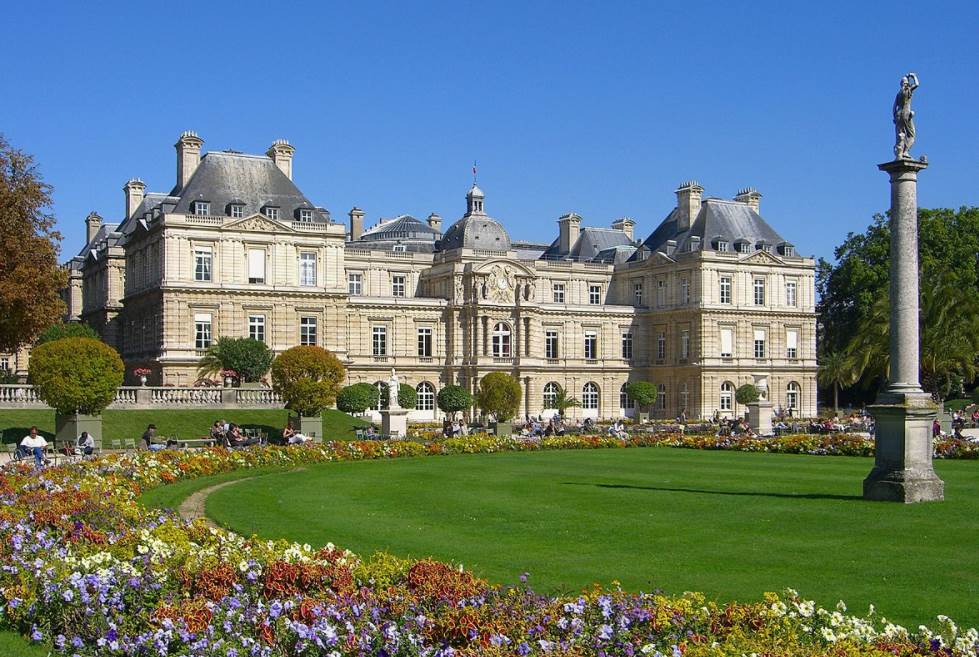
21. Grand Palais
The Grand Palais is an enormous exhibition hall located right next to the Champs-Élysées on the north bank of the River Seine.
It’s situated just to the west of the Place de la Concorde near the end of the most famous avenue in the city. The building is adjoined by the Petit Palais which means the “Small Palace.”
Both structures were built for the Universal Exposition of 1900 that was held in Paris that year.
It focused on technological advancements at the turn of the century and attracted nearly 50 million visitors to the city.
The building replaced an original similar structure called the “Palais de l’Industrie” which was built for the World Fair of 1855.
Today, the Grand Palais is still used for multiple exhibition events and sometimes serves as the venue for various sporting events as well.
It’s one of the biggest and most famous buildings in Paris because of its size and unique architectural design which mixes Beaux-Arts and Art Nouveau architecture.
Official website: Grand Palais
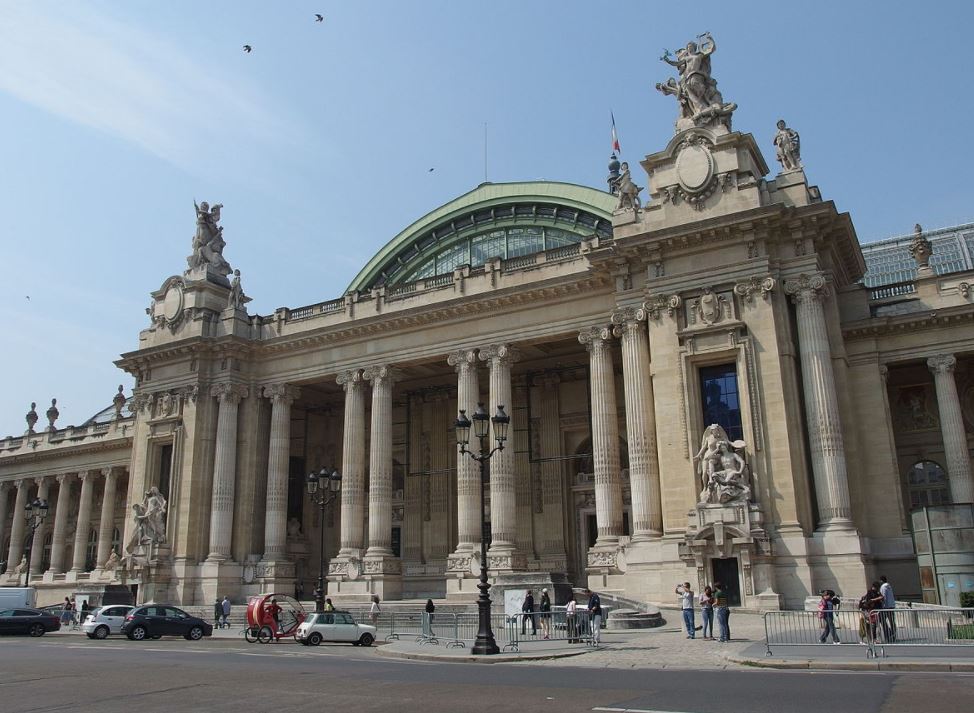
22. Check out the Louvre Pyramid
The Louvre Pyramid is the iconic entrance of the Louvre Museum, one of the most famous and biggest museums in the world.
It was constructed of steel and glass and brings visitors to the lower levels of the lobby of this magnificent art museum.
The pyramid is located in the main courtyard of the former Louvre Palace referred to as the “Cour Napoléon.”
This remarkable structure was commissioned in the year 1984 by then French President François Mitterrand, designed by American-Chinese architect I. M. Pei, and completed 5 years later in the year 1989.
The main pyramid is surrounded by 3 smaller pyramids and has become an icon of not only the Louvre Museum but of the city as well, becoming one of the best-recognized landmarks in Paris!
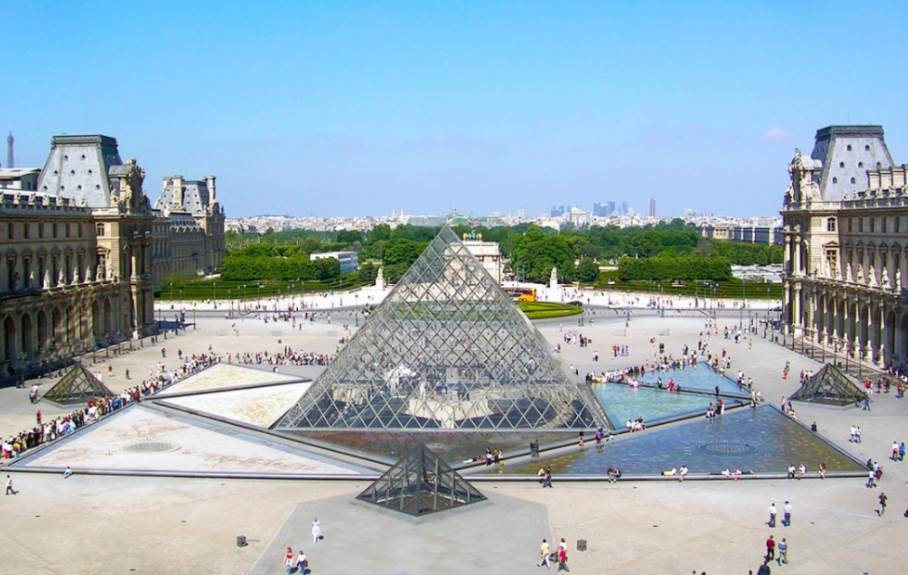
23. Palais Garnier
The Palais Garnier is the home of the Paris Opéra and is located on the “Place de l’Opéra” at the end of the “Avenue de l’Opéra.”
This surely means that it’s the city’s main opera house and has been ever since the building was completed in the year 1875.
This magnificent opera house was named after the man who designed it, Charles Garnier, on a commissioned of Emperor Napoleon III during the Second Empire of France in the 19th century.
It was the most extravagant and expensive building constructed during this period.
The building was constructed in what Garnier referred to as the “Napoleon III architectural style,” a reference to the Emperor himself because it uses a wide variety of elements of other architectural styles
These include Baroque, Neoclassical, and Renaissance styles. The building is heavily ornamented, both outside and inside, making it a must-visit location if you enjoy remarkable architectural features or enjoy opera.
Official website: Palais Garnier
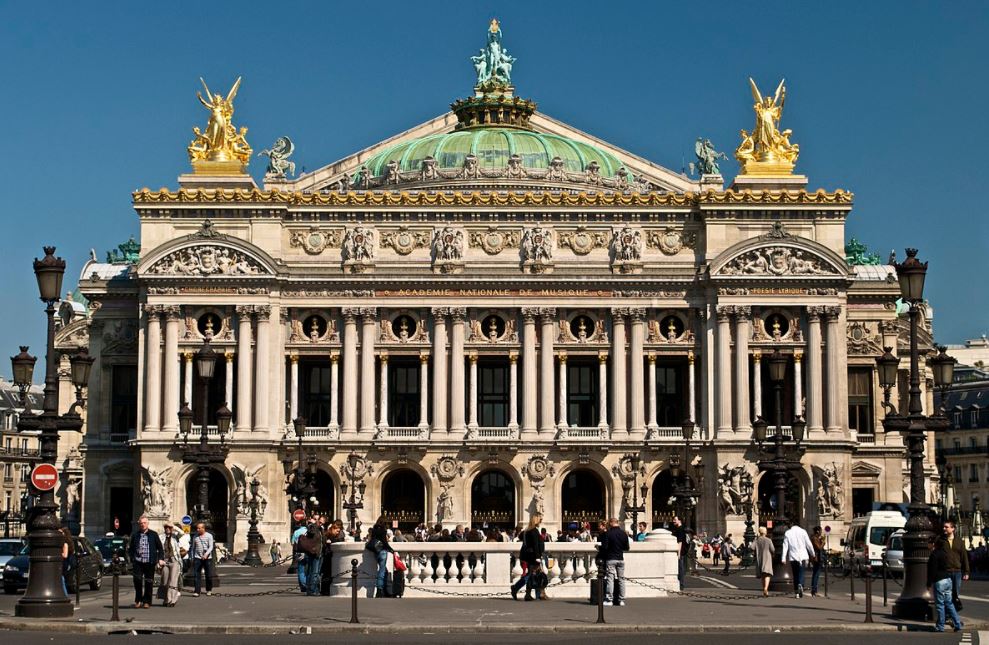
24. La Madeleine church
La Madeleine is also known as “L’église de la Madeleine” or “L’église Sainte-Marie-Madeleine” (Madeleine Church) is one of the most fascinating landmarks in Paris.
This remarkable church was built in the form of an ancient temple meaning it was built in the Neo-Classical style.
The main inspiration of the church was the much smaller Maison Carrée in Nîmes, a remarkably well-preserved ancient Roman temple in the center of the city in southern France.
The building in Paris is located just to the north of the Place de la Concorde in the 8th arrondissement of the city.
This magnificent building was built between 1807 and 1828 and was originally commissioned by Napoléon Bonaparte in honor of the French Army.
So his words the building was to become a “Temple to the Glory of the Great Army.” Only after the fall of Napoléon, it was decided to use the building as a church
It still serves this purpose today and is one of the most intriguing buildings in Paris.
Official website: La Madeleine
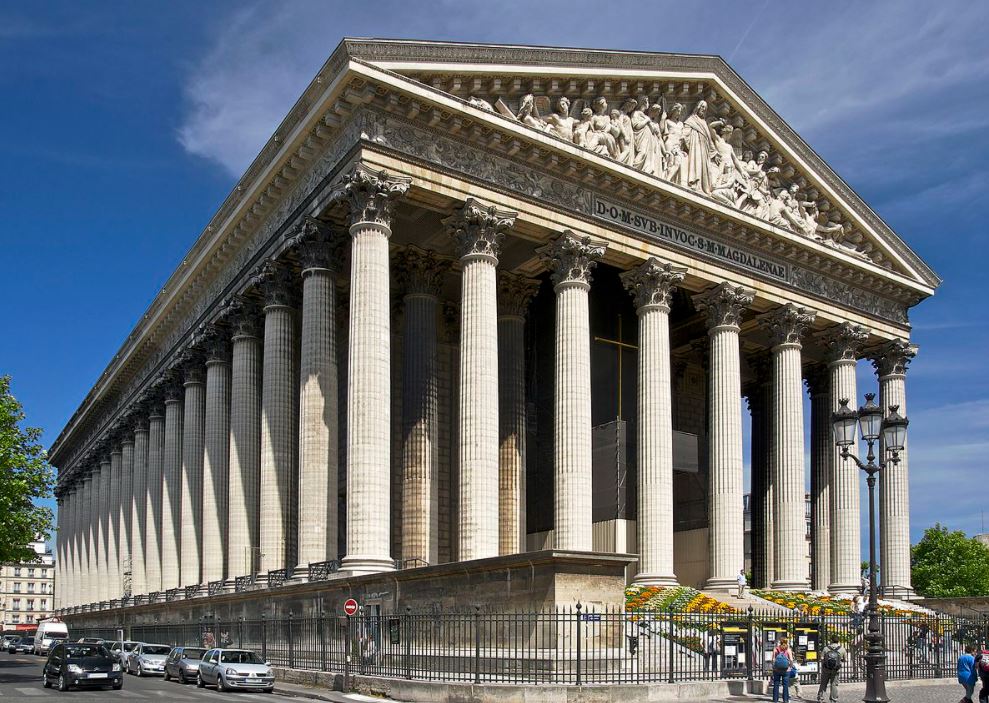
25. Panthéon
The Panthéon in Paris is not to be confused with the building equally referred to as the Pantheon in Rome.
The building in Paris is an enormous monument that was originally commissioned by King Louis XV to serve as a church.
This building is located in the 5th arrondissement of Paris was constructed between 1758 and 1790 which means it was completed around the time of the French Revolution.
After this historic event, the purpose of the building was changed and it was turned into a mausoleum to bury important French citizens.
The building was one of the earliest Neo-Classical buildings in the city and featured a marvelous dome that was inspired by a little temple in Rome called the “Tempietto,” a fascinating and influential little structure designed by Donate Bramante.
Official website: Panthéon in Paris
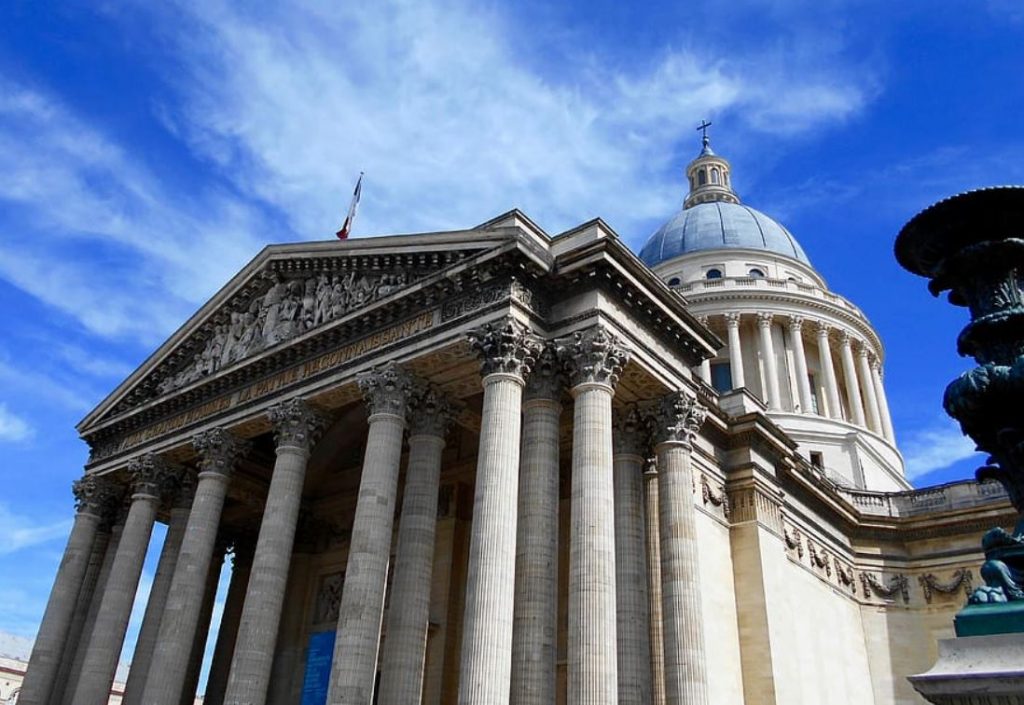
26. Catacombs of Paris
We already discussed a remarkable ossuary in our list of buildings in Milan, but the one you’ll come across in Paris is quite something else.
The Catacombs of Paris are a huge collection of underground ossuaries that house the remains of over 6 million people.
These catacombs were built along the tunnels of the old stone quarries of Paris and start near the “Barrière d’Enfer” or “Gate of Hell,” one of the city gates.
Building this remarkable underground burial ground was kind of necessary because the cemeteries in and around Paris were overflowing in the 18th century.
Most of the network was completed in the late 18th century and the remains of millions of dead people were transported here.
Today, the catacombs are one of the 14 Paris City Museums and most definitely one of the most peculiar tourist attractions in the city.
Official website: Catacombs of Paris
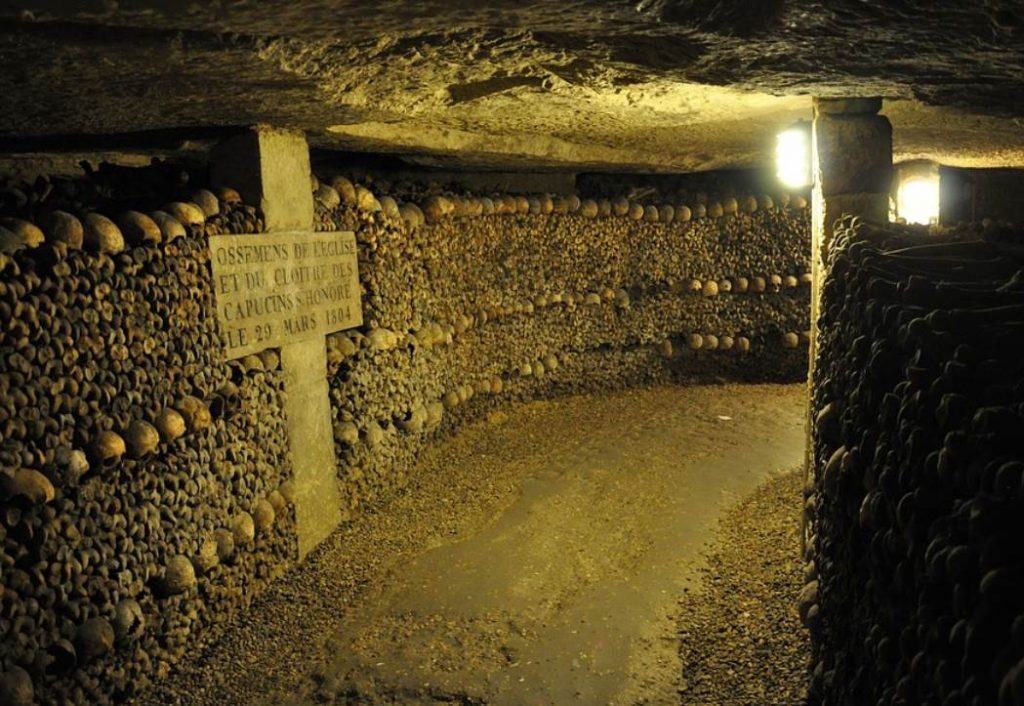
27. Rodin Museum
The Musée Rodin is a museum dedicated to the amazing sculptures of arguably the most famous French sculptor in history, Auguste Rodin (1840-1917).
He is the creator of one of the most replicated sculptures in history called “The Thinker” and is considered to be the founding father of modern sculpture.
The museum is located in two different locations. The main venue is the “Hôtel Biron,” a huge mansion in the center of Paris.
The other venue is located at Rodin’s final residence called the “Villa des Brilliants,” a place located in Meudon, a suburb in the southwestern part of Paris.
The museum opened its doors in 1919, two years after the artist passed away. Many of the sculptures can be found in the garden of the Hôtel Biron as well, making it an enjoyable museum to visit.
Official website: Musée Rodin
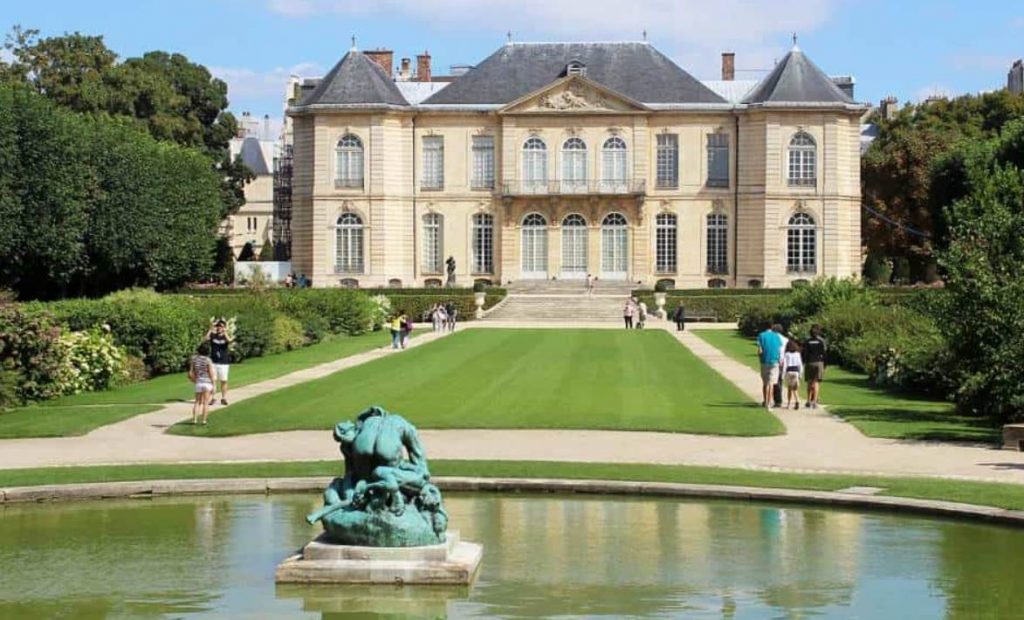
28. Moulin Rouge
One of the most popular entertainment venues in the world is located near the foot of Montmartre in the Pigalle district of Paris.
The Moulin Rouge is known for being the birthplace of the can-can dance, at least the modern version of it. This form of entertainment eventually spread all across Europe and other parts of the world.
The original venue was founded in the year 1889 but burned down in 1915. It features an iconic red windmill on its roof, making it one of the best-recognizable structures in the city.
Today, the place offers shows in a typically French, fine-de-siècle (end of the century) setting, which can be considered to be pretty romantic.
The place has been featured in numerous movies and television programs and is worth a visit if you want to enjoy a nice show.
Official website: Moulin Rouge
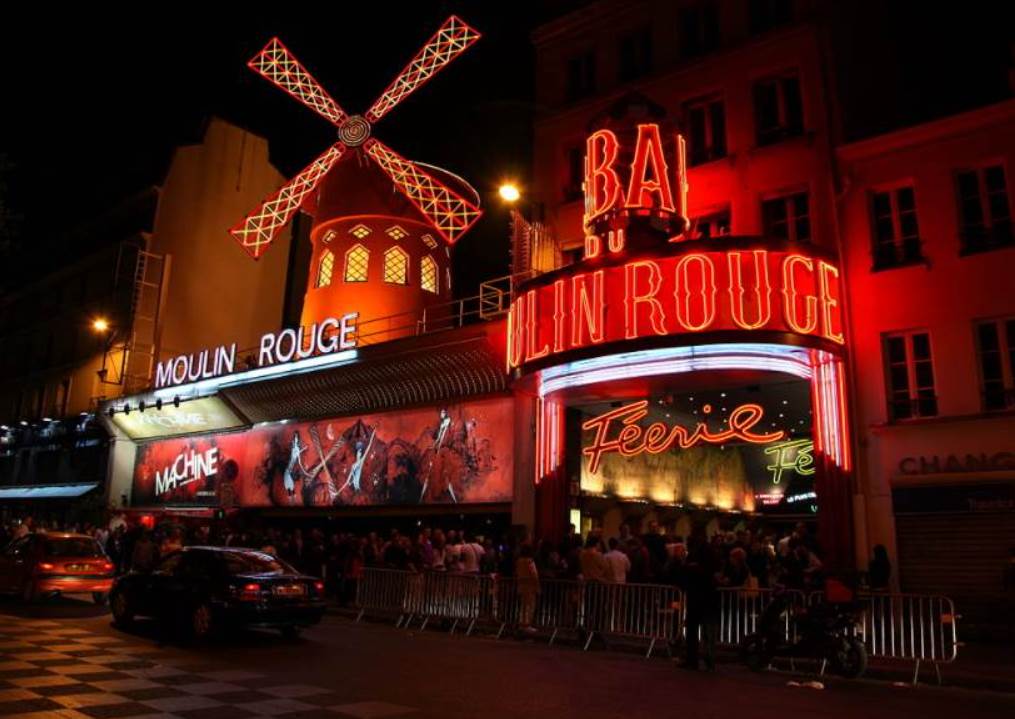
29. Père Lachaise Cemetery
Even though the Catacombs of Paris house the remains of over 6 million people, this doesn’t mean that there aren’t any large cemeteries.
The largest cemetery in the city, known as “Père Lachaise Cemetery,” covers an area of 44 hectares (110 acres).
It’s also one of the most popular tourist attractions in Paris as it’s visited by over 3.5 million visitors every year, making it the most-visited necropolis in the world.
The cemetery is located in the eastern part of the city and over 1 million people are buried here. 3 World War I memorials are part of the complex as well.
The cemetery was founded in the year 1804 and was named after Père François de la Chaise (1624–1709). He was the Jesuit priest to who Louis XIV confessed all of the horrible sins he committed.
That’s mainly because the man lived in a house nearby which was built in the late 17th century.
Today, the cemetery is still operational as the deceased are still buried here. It’s also the final resting place of numerous famous people, including Oscar Wilde, Jim Morrison, and Frédéric Chopin, to name just a few.
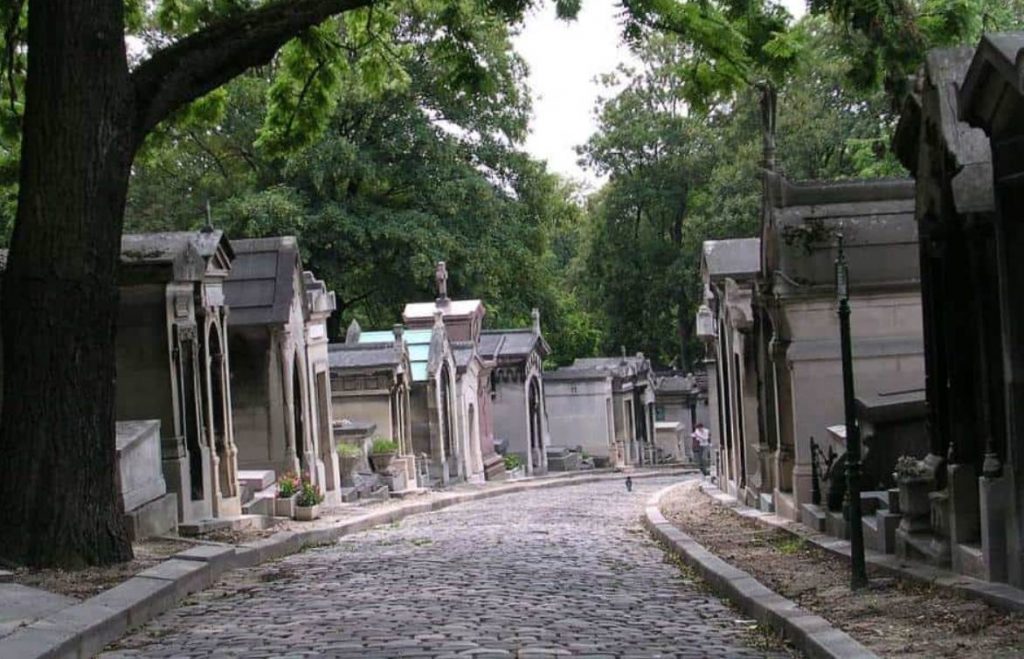
30. Check out the arcade of the Palais-Royal
As the name of the structure suggests, the Palais-Royale served formerly as a royal palace. It’s located right in the heart of the city in the 1st arrondissement.
The enormous structure was originally built between 1633 and 1639 and named the “Palais-Cardinal.” That’s because it was originally built for Cardinal Richelieu (1585-1642), a bishop who also became a successful politician and French statesman.
He eventually bequeathed the palace to King Louis XIII, followed by King Louis XIV. he was too busy with his other palaces, especially at Versailles, that he left it to the Dukes of Orléans.
Countless changes were made to the original structure in the following centuries, resulting in a huge palace that was completely transformed from its original 17th-century design.
Today, the palace serves multiple purposes, including the seat of the Ministry of Culture, the Conseil d’État, and the Constitutional Council.
The palace is astounding, both the exterior and interior and features a fascinating Court of Honor with multiple rows of colonnades as well, quite an amazing place to visit in the heart of the city.
Official website: Palais-Royale
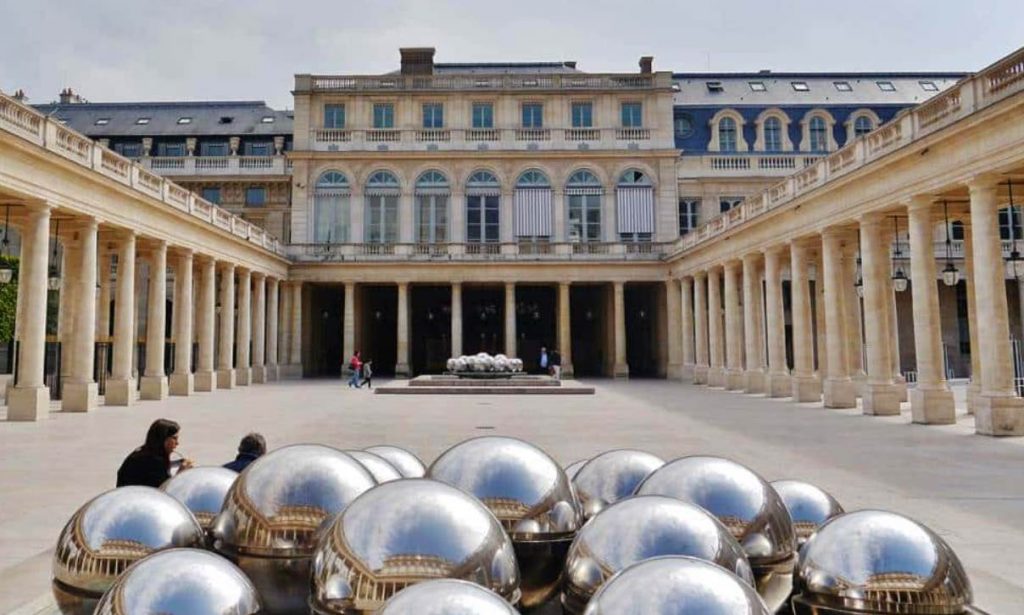
31. Parc des Buttes-Chaumont
The Parc des Buttes-Chaumont covers an area of 24.7 hectares (61 acres) which makes it the 5th-largest public park in the city.
The park was established on the orders of Emperor Napoleon III and only opened in the year 1867. To give some reference, this is around the time that the opulent Palais Garnier was constructed as well.
The park was built on a former quarry and the reason becomes quite clear when you walk around here as it features multiple cliffs.
One of these huge rocks features a temple called the Temple de la Sibylle which was inspired by an ancient Roman temple of Vesta in Tivoli, just outside of Rome.
With 5.5 kilometers (3.4 miles) of roads and 2.2 kilometers (1.4 miles) of footpaths, this is one of the best places in the city to go for a walk as well.
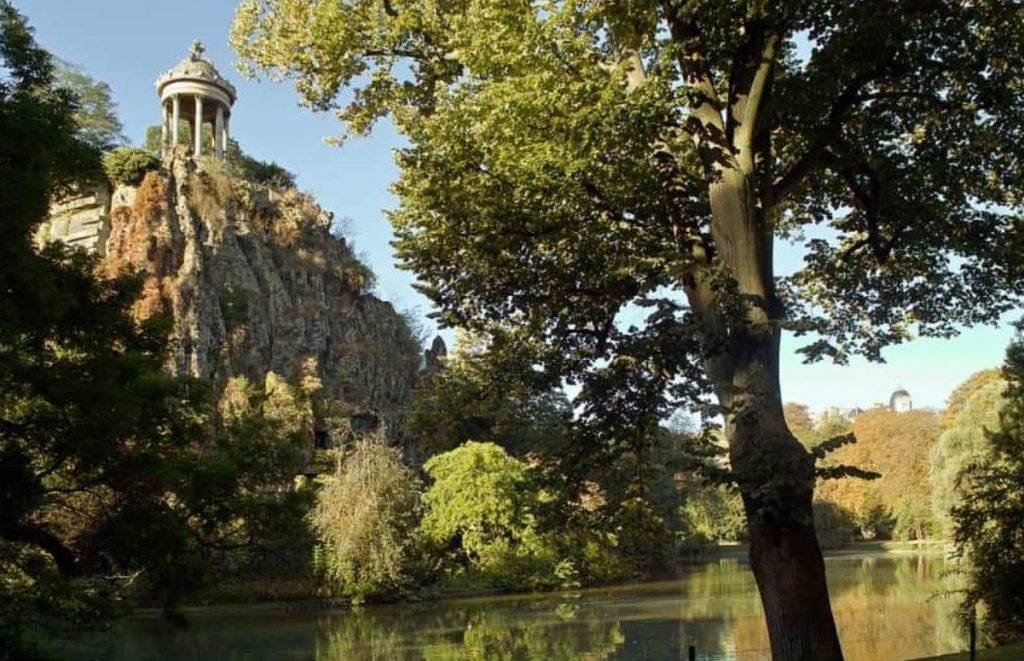
32. Picasso Museum
We probably don’t need to introduce Pablo Picasso (1881-1973) to you because he’s one of the most famous artists in history.
He has a museum dedicated to his artworks in Barcelona and one in Paris as well called the “Musée Picasso.”
Similar to the Musée Rodin, this art gallery is located in a huge 1659 mansion called the “Hôtel Salé” in the historic and former aristocratic Marais district of the city.
The museum features over 5,000 works of art of the Spanish artist, including paintings, sculptures, drawings, ceramics, prints, and engravings.
It also houses a large collection of personal notes, correspondence, and photographic material of Picasso.
One of the most famous works in the collection is called “Massacre in Korea,” an anti-war painting in line with his famous “Guernica” (1937). It depicts women and children being massacred during the Korean War in the 1950s.
Official website: Musée Picasso
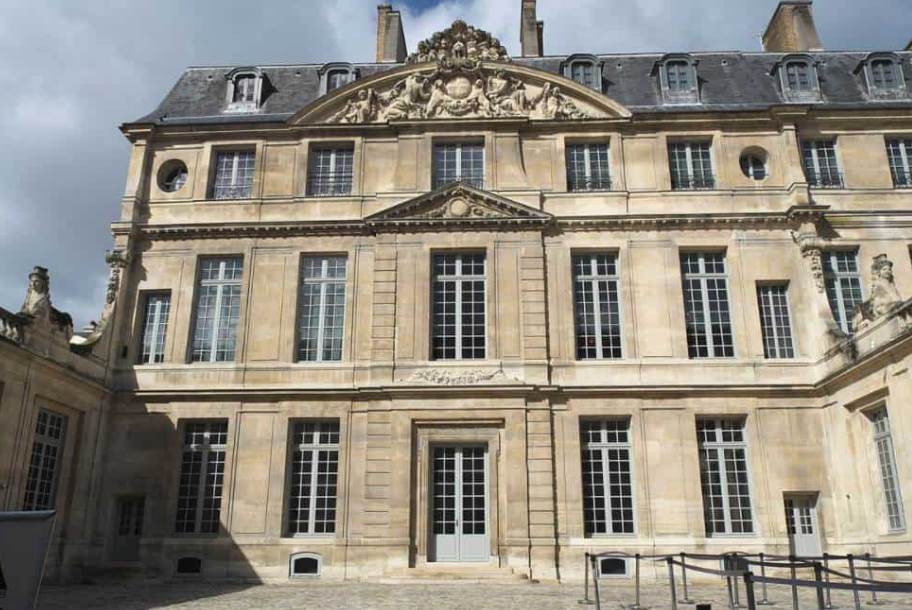
33. Jardin des Plantes
The Jardin des Plantes is also sometimes referred to as the “Jardin des Plantes de Paris” because this is the common name of botanical gardens in France.
This is the main botanical garden in the country and was originally established in 1635 as a royal garden to grow medicinal plants.
It’s located in the 5th arrondissement of the city and covers an area of 28 hectares (69 acres).
This amazing green area is also home to the main gallery of the National Museum of Natural History. This enormous museum has a collection of over 62 million specimens.
Other features of this remarkable place are a zoo, archives, a library, and multiple greenhouses.
Even though the garden itself is a great place to relax and walk around in nature, the “Great Gallery of Evolution” inside the National History Museum is quite spectacular to visit as well.
Official website: Jardin des Plantes
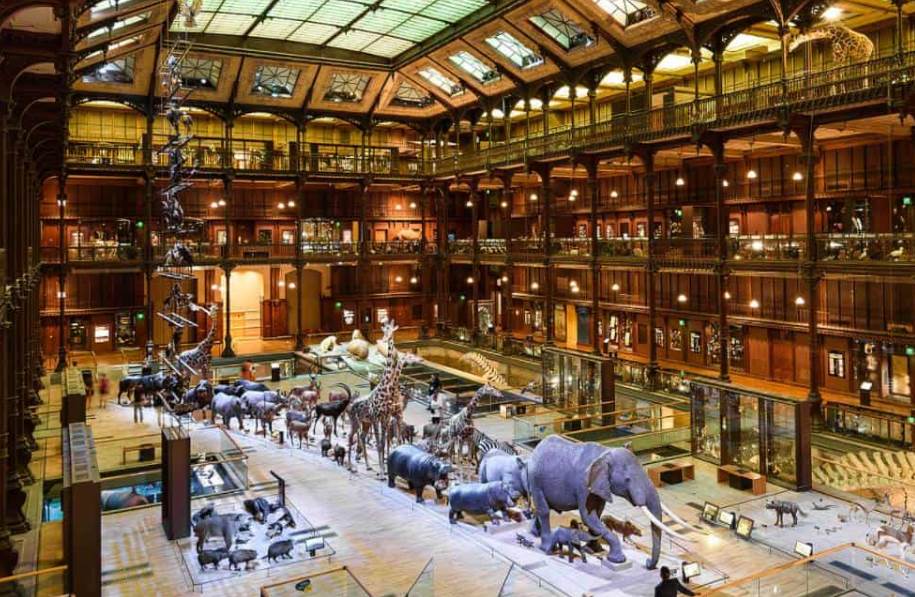
34. Petit Palais
The Grand Palais is the huge exhibition space that was built for the 1900 Exposition Universelle. This enormous structure is adjoined by another fascinating building referred to as the “Petit Palais” or “Small Palace.”
It’s located on the Avenue Winston Churchill and its façades face both the Seine and the Champs-Élysées.
The name is deceiving as well because this is a huge structure built in the remarkable Beaux-Arts architectural style typical of the late 19th century.
The building houses a museum that is part of the 14 Museums of the City of Paris and has a very diverse collection of fine art on display.
The most prominent collection of 19th-century paintings and sculptures, including works by Ingres, Géricault, Delacroix, Monet, Sisley, Pissarro, Cézanne, and Modigliani, to name just a few of the artists on display.
Official website: Petit Palais
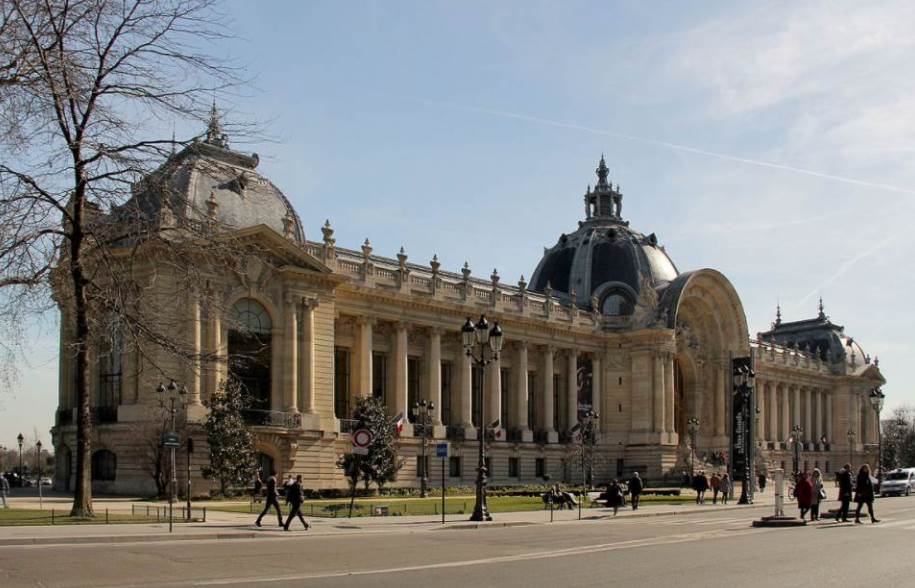
35. Hôtel de Ville
The Hôtel de Ville has been one of the most important buildings in Paris since the year 1357. That’s the year that the original structure on this location became the seat of the city’s local administration.
The south wing of the building was built between 1535 and 1551 and the north wing between 1605 and 1628.
Unfortunately, the unhappy campers during the Paris Commune in 1871 burned the original structure to the ground.
It was, however, rebuilt with the same design between 1874 and 1882, and quite significantly enlarged as well.
Apart from serving as the seat of the local administration, it’s also home to the Mayor of Paris, the cabinet, and the venue of important receptions in the city.
All you can do is stand in awe of the amazing architecture of this building.
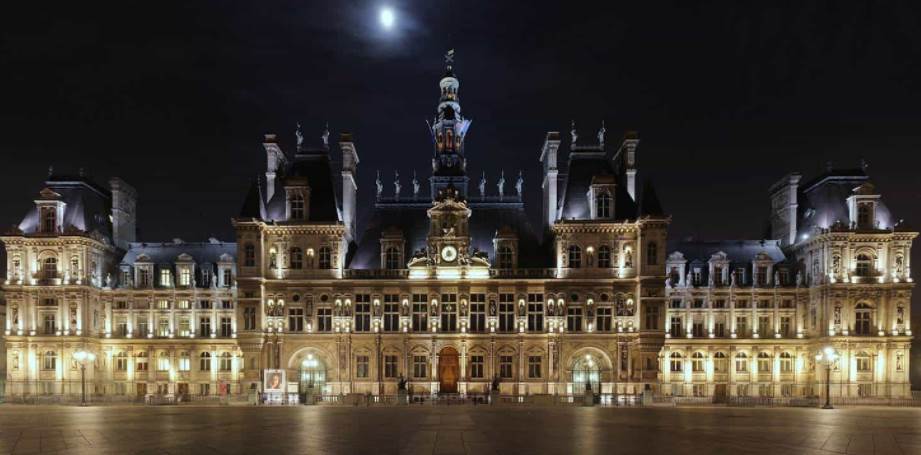
36. Pont Neuf
Even though Pont Neuf translates to “New Bridge,” this is the oldest standing bridge in the city today.
The name refers to the fact that it was once a new bridge among multiple medieval bridges crossing the River Seine in Paris.
The bridge consists of two sections on both ends of the Île de la Cité, the historical heart of the city, and it was completed between 1578 and 1607.
The bridge has a total length of 232 meters (761 feet) a width of 22 meters (72 feet) and the two sections feature 7 and 5 arches.
Walking across this 4-century old bridge is quite a remarkable experience, especially considering the events that have happened during this period in Paris.
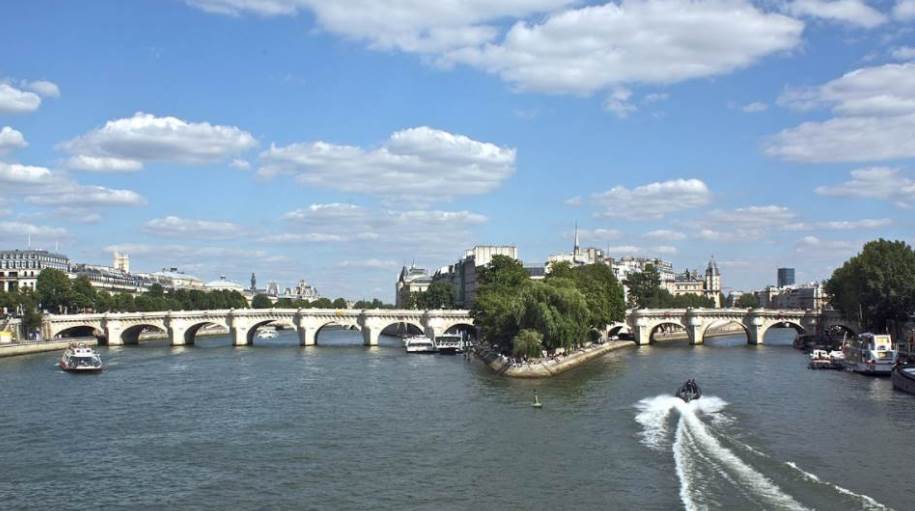
37. Parc Monceau
Just northeast of the Arc de Triomphe, in the 8th arrondissement of the city, you can find a remarkable public park with a fascinating history.
The Parc Monceau was originally the idea of the rich and influential Phillippe d’Orléans, Duke of Chartres (1747-1793).
He was a cousin of King Louis XVI and both cousins would end up being guillotined at the Place de la Concorde, not too far from this public park, during the French Revolution.
The park was established in 1778 and covers an area of 8.2 hectares (20.3 acres). The duke’s idea was to build a traditional English garden with multiple architectural features.
The result is a park that features a Rotunda at the main entrance, an ancient row of colonnades, and a miniature ancient Egyptian pyramid.
Today, the park features multiple play areas for children and is one of the most popular locations in the area for locals to hang out.
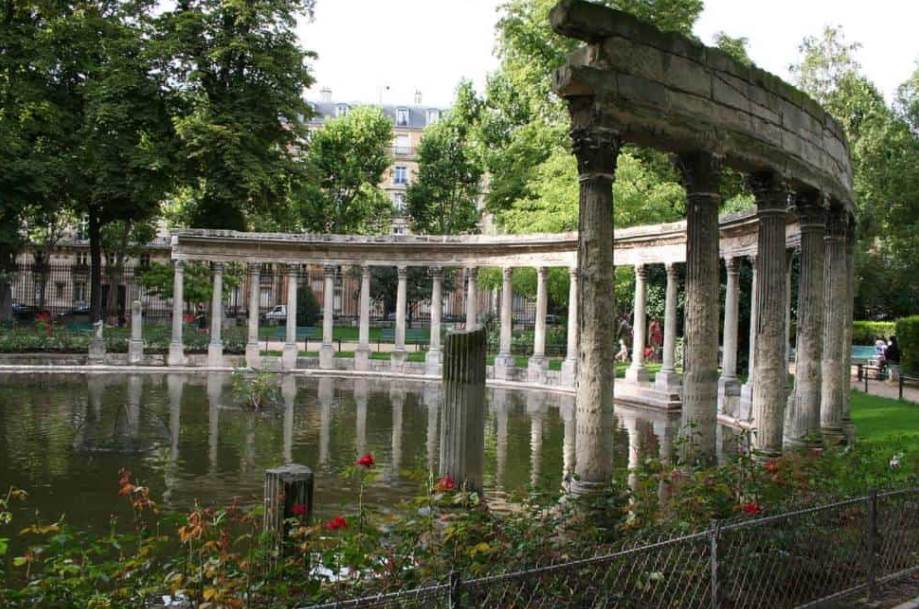
38. Paris Museum of Modern Art
The Paris Museum of Modern Art, officially known as the “Musée d’Art Moderne de Paris,” is one of the 14 City of Paris’ Museums dedicated solely to the art of the 20th and 21st centuries.
The museum is housed in the magnificent Palais de Tokyo which was originally built for the International Exhibition of Arts and Technology of 1937.
The museum was established in 1961 and the venue has undergone a serious renovation worth €10 million which was completed in 2019.
Some of the highlights of the museum are works by Pablo Picasso, Georges Braque, Henri Matisse, Raoul Dufy, and Jean Metzinger, to name just a few famous artists.
The collection size of the museum is over 15,000 works of art, but temporary exhibitions are held here every six weeks as well.
Official website: Paris Museum of Modern Art
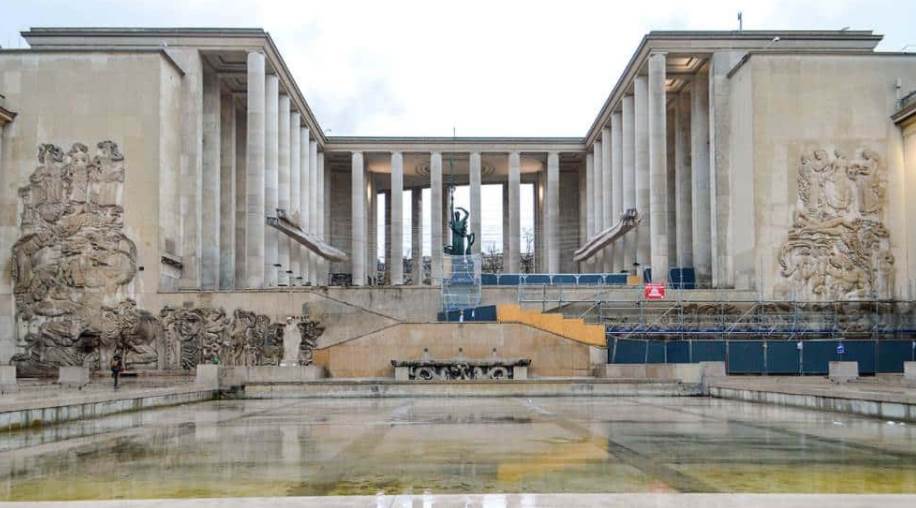
39. Check out Napoleon’s monument at the Place Vendôme
One of the most amazing squares in the city is located just north of the Tuileries Garden and not too far northeast of its equally famous counterpart, the Place de la Concorde.
The Place Vendôme was originally known as the Place des Conquêtes before being renamed Place Louis-le-Grand by King Louis XIV in the late 17th century.
Following the French Revolution, Napoleon I erected a huge column here to commemorate the Battle of Austerlitz (1805), one of the most important battles of the Napoleonic Wars.
This column was briefly torn down during the Paris Commune in 1871 but quickly re-erected. It remains the most prominent landmark on this remarkable square today.
The square is lined with some of the most amazing hotels in the city as well, quite a fascinating place to walk around.
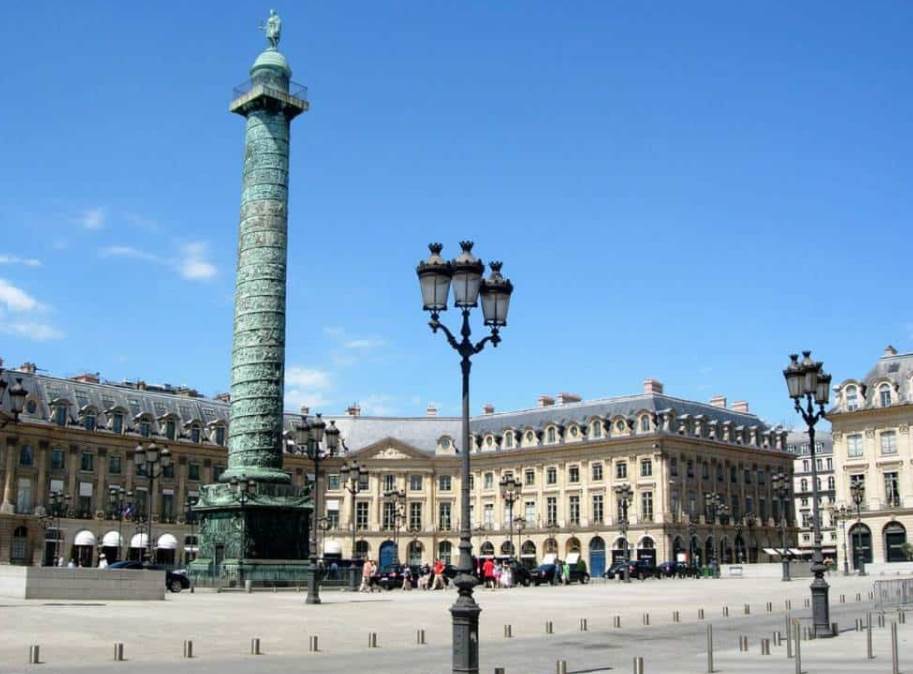
40. Église Saint-Sulpice
Even though Notre Dame Cathedral is the largest church in Paris, this surprising church called Église Saint-Sulpice can hold a candle to it.
The church is located in the Latin Quarter in the 6th arrondissement of the city and was dedicated to Sulpitius the Pious, a 7th-century bishop.
Even though the construction of this church was started in 1646, it was only completed in the year 1870.
The two most prominent features of the exterior of the church are the North and South towers which stand 73 meters (240 feet) and 68 meters (223 feet) tall respectively.
The sheer size of this structure makes entering it a remarkable experience while you’re in the neighborhood.
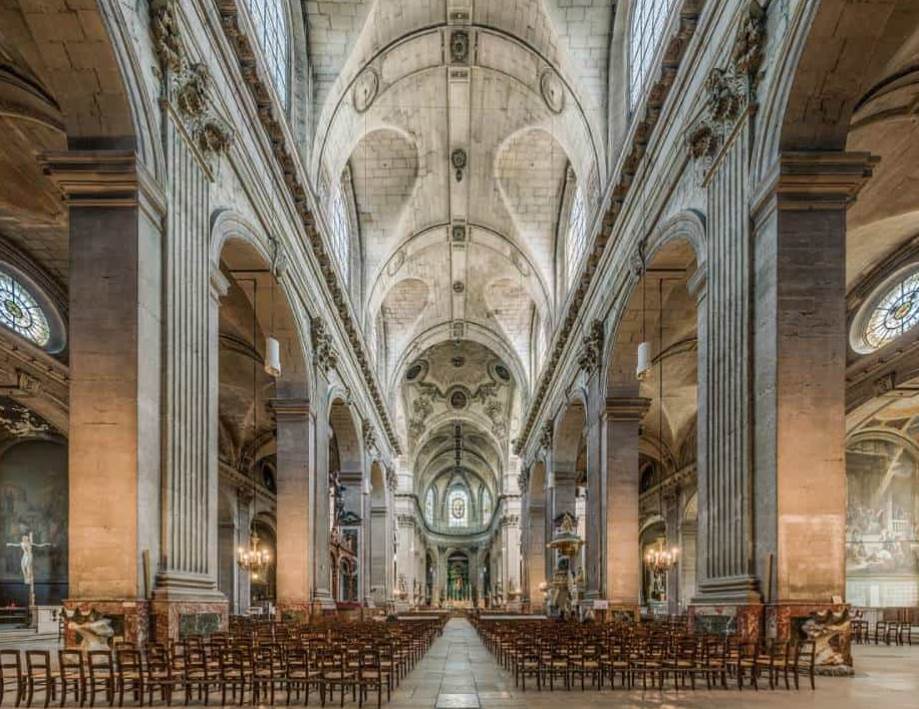
41. Take iconic pictures at the Palais de Chaillot and Trocadéro Gardens
If there’s one iconic and easily recognizable image from Paris, then it’s surely the famous shot from a vast space featuring a garden and fountains with the Eiffel Tower in the background.
This space is referred to as the “Jardins du Trocadéro” and is located in the 16th arrondissement. It’s squeezed in between the Pont d’Iéna which crosses the Seine River in a straight line to the famous tower, and the immense Palais de Chaillot.
The northwest wings of this palace face the Trocadéro Gardens and were a replacement of the old Trocadéro Palace built for the World Expo of 1937.
The most prominent feature inside the garden is the so-called “Fountain of Warsaw,” a basin featuring several fountains that make the scenery even more picturesque.
The Palais de Chaillot was built on top of a hill with the same name and offers a perfect portion to capture the Eiffel Tower, while the space itself offers astounding views from the tower itself.
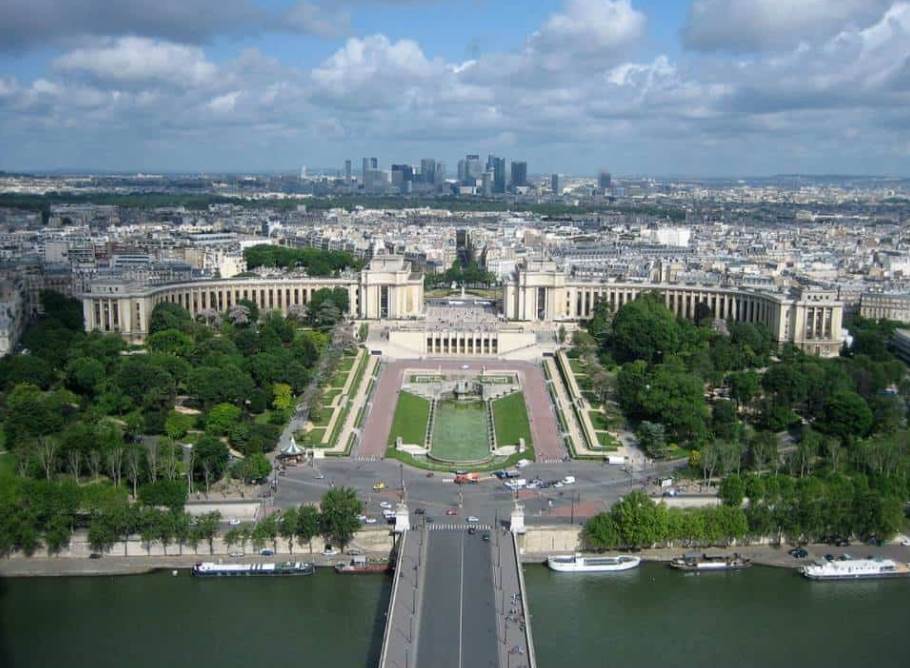
42. Château of Vincennes
While you’re in the area, you might as well take a visit to the Château of Vincennes, right?
This immense castle originated as a hunting lodge that was established here by King Louis VII around 1150. This was a great location because the huge forested area of Vincennes was a popular hunting location.
The castle we see today was built between 1340 and 1410 on an enormous scale. Its perimeter has dimensions of 330 by 175 meters (1,082 by 574 feet) which means it’s over a kilometer long.
The main feature of the castle is its enormous keep located on the western end of the castle. It stands 52 meters (170 feet) tall, an incredible structure at the time it was completed.
Other features of the castle are the huge moat and several defensive towers. Daily tours inside the castle are available making this a great tourist attraction just east of Paris.
Official website: Château de Vincennes
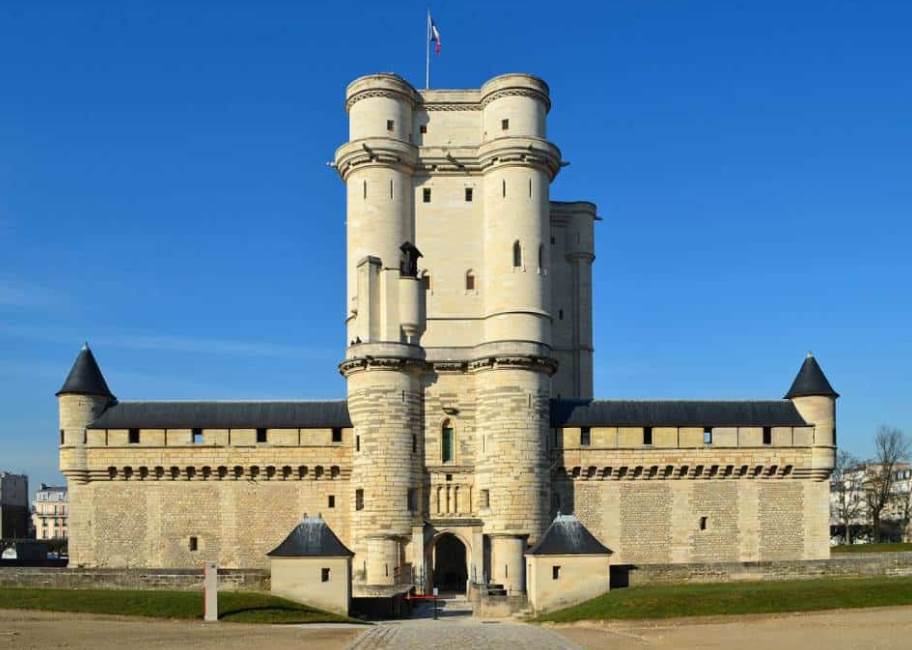
43. Galeries Lafayette
Even though Galeries Lafayette is the name to describe a chain of department stores located all around France, its main store is located on Boulevard Haussmann in the 9th arrondissement of the city.
It’s located near the magnificent Palais Garnier and is one of the most remarkable shopping malls you’ll ever come across.
The store was inaugurated in 1912 and the most prominent feature inside the main store is a Neo-Byzantine dome that reaches a height of 43 meters (141 feet).
The store covers a total area of 70,000 square meters (750,000 square feet) and features most of the popular brands.
Official website: Galeries Lafayette (in French)
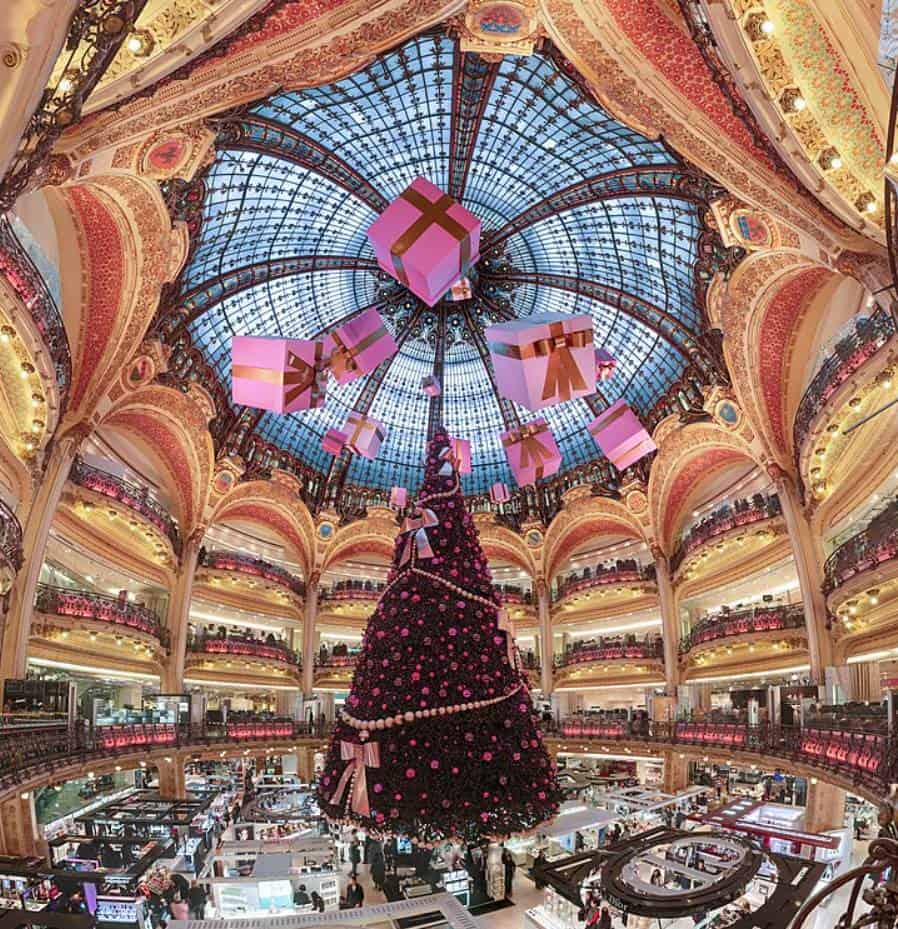
44. Saint-Étienne-du-Mont
A church that is known as Saint-Étienne-du-Mont is located right next to the Panthéon on the Montagne Sainte-Geneviève.
It was built between 1494 and 1624 and is home to the shrine of the patron saint of Paris, Sainte-Geneviève (419-512).
Apart from the tomb of the famous patron saint of the city, it also features the tombs of some other famous people including the tombs of Blaise Pascal and Jean Racine.
Unfortunately, the relics of Sainte-Geneviève that were held here were thrown in the Paris sewer during the French Revolution in 1793.
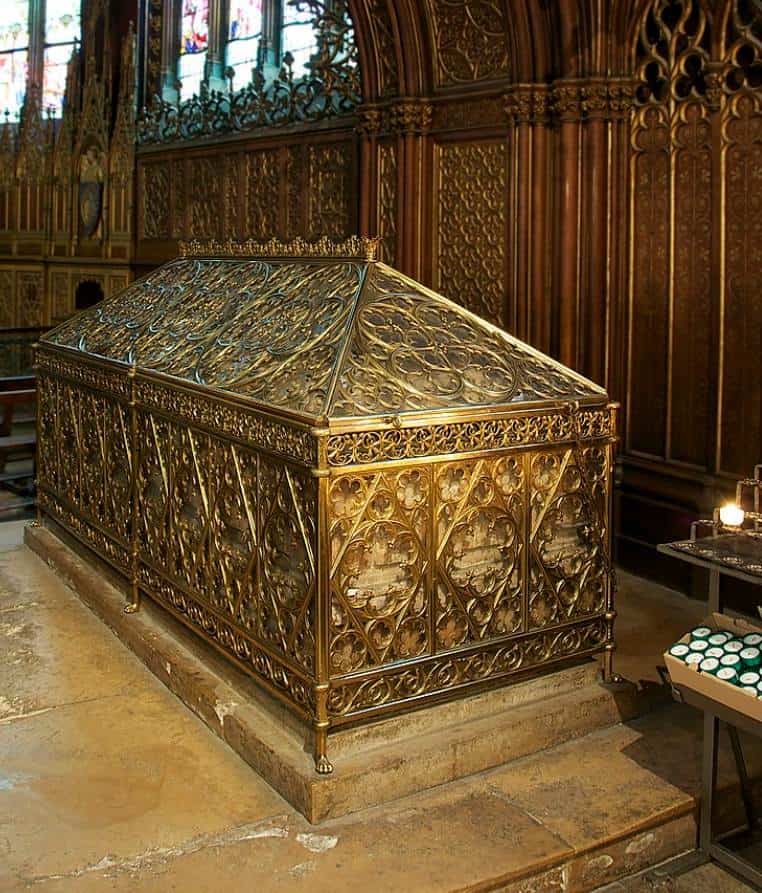
45. Île Saint-Louis architecture
While there’s only one river island located within the boundaries of the city of Rome, Tiber Island, Paris is blessed with two natural islands.
The most famous one is the Île de la Cité, the historical heart of the city which features Notre Dame and Sainte Chapelle among many other fantastic landmarks.
Both the Île de la Cité and the Île Saint-Louis are located just next to each other and are even connected through the “Pont Saint-Louis.”
The island was named after Louis IX (1214-1270) who was made a saint, but this didn’t happen until the year 1725.
Shortly after the name of the island was determined, the only church on the island, Saint-Louis-en-l’Île, was completed as well.
Today, the island is an enjoyable place to walk around as it features numerous bars, restaurants, and a famous ice cream shop known as “Berthillon,” which is located right in the middle of the island.
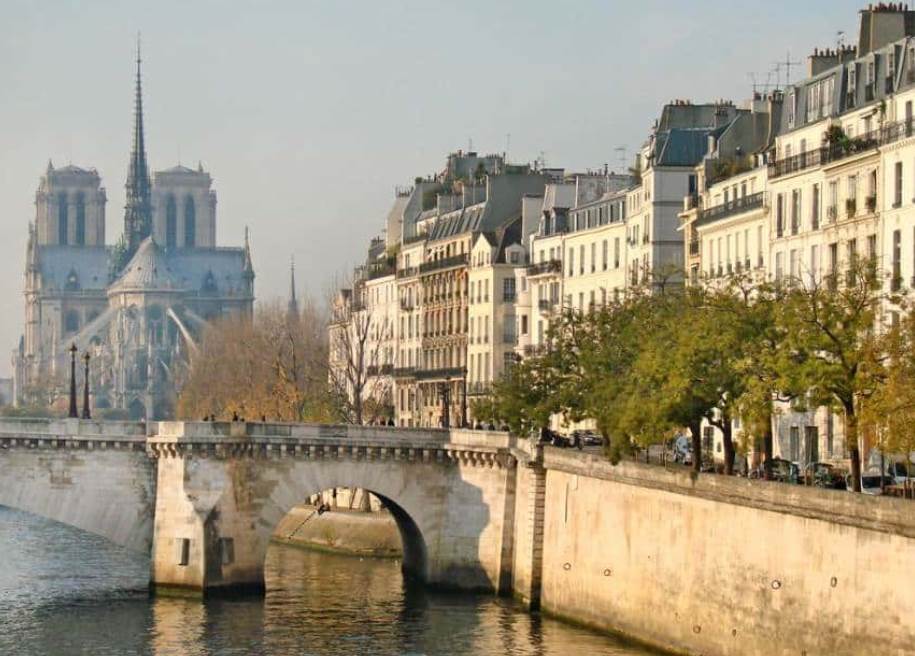
46. Conciergerie
If there’s one structure in the city that looks like the entrance of a medieval dungeon then it’s definitely the Conciergerie.
This Gothic complex is located on the northwestern side of the Île de la Cité and was originally used as a royal palace during the Merovingian period between the 10th and 14th centuries.
The 3 remarkable towers are remnants of this medieval palace and are remarkably well-preserved as well.
For centuries, the building was transformed into a prison and played a crucial role during the French Revolution.
It’s here that prisoners were held before they were transported to the execution grounds in various places in Paris to be beheaded by the guillotine. This includes several members of the royal family, including Marie Antoinette.
Today, the building is still used as a court of law and is open for tours as well. If you want to discover the cells in which people were held during the late 18th century and the horrible conditions of the medieval prison, then this is a great place to visit.
Official website: Paris Conciergerie
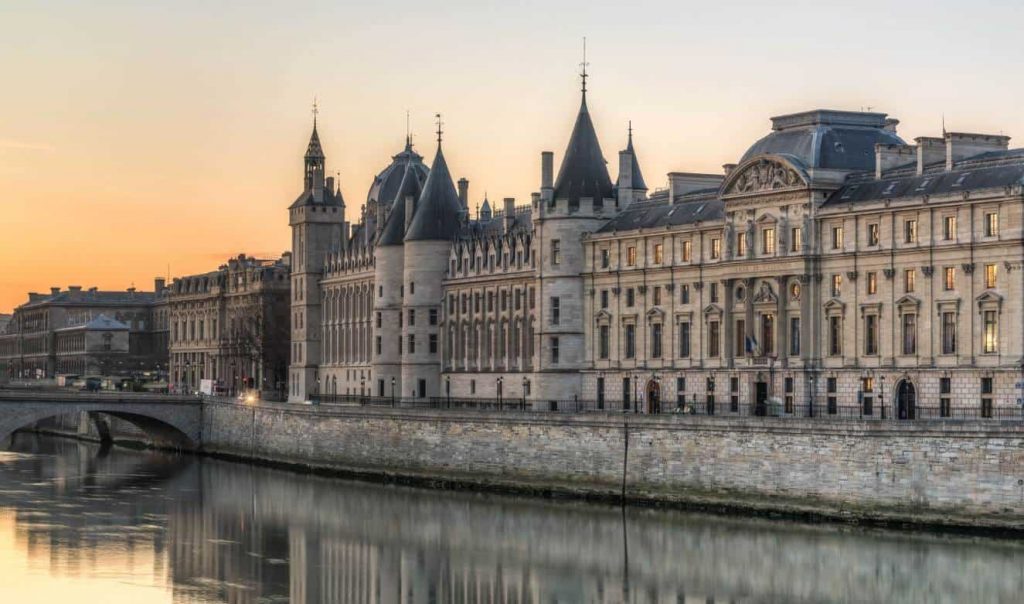
47. La Défense (modern architecture)
La Défense is the name to describe the business district of the city. This area of the city is located at the utmost northwestern end of the so-called “Axe Historique” and features numerous modern structures.
This place is huge as it covers an area of 560 hectares (1,400 acres). This makes it the largest business district in Europe.
In the heart of the business district, you can find the “Esplanade,” known locally as the “Parvis de la Défense.” This is an enormous square with a length of 300 meters (980 feet) and a width of 120 meters (390 feet).
It’s quite a remarkable place to walk around in because the center of the city is mostly filled with historic buildings.
Other features of La Défense are a huge shopping mall called “Les Quatre Temps,” La Grande Arche, and an open-air museum.
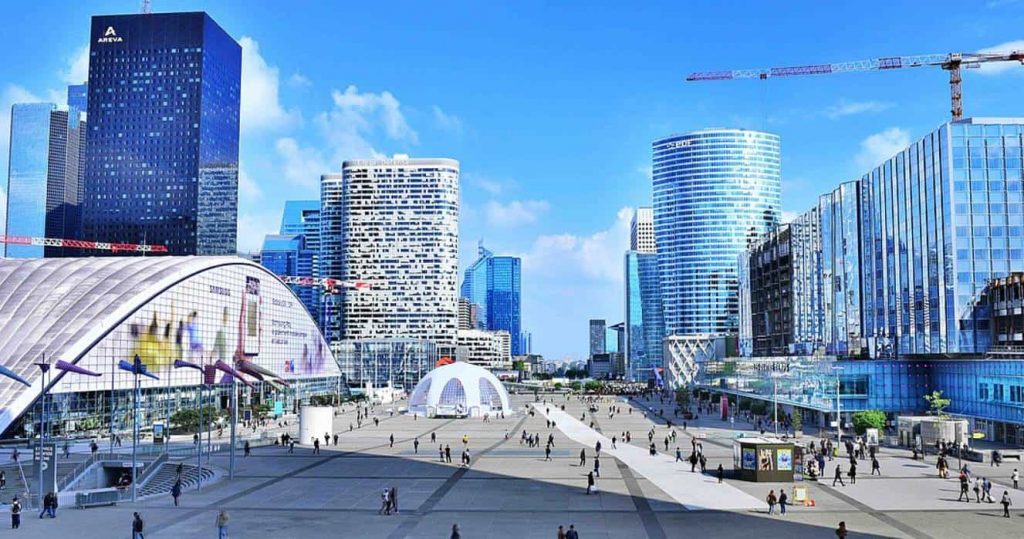
48. Place des Vosges
Relaxing at the Place des Vosges is quite an experience, especially if you know that this is the oldest planned square in the city.
It’s located just north of Île Saint-Louis in the historically upscale Marais district. This was one of the most expensive places to live in pairs during the 17th and 18th centuries.
The square was built by King Henry IV between 1605 and 1612 and was originally referred to as the “Place Royale,” or “Royal Square.”
The square has exactly this shape and has a length and width of exactly 140 meters (460 feet). Over 4 centuries ago, this was still possible in this part of the city.
The chick nature of the square also resulted in it being lined with aristocratic houses. These are amazing sights from the middle of the perfectly maintained lawn which is lined with mature linden trees.
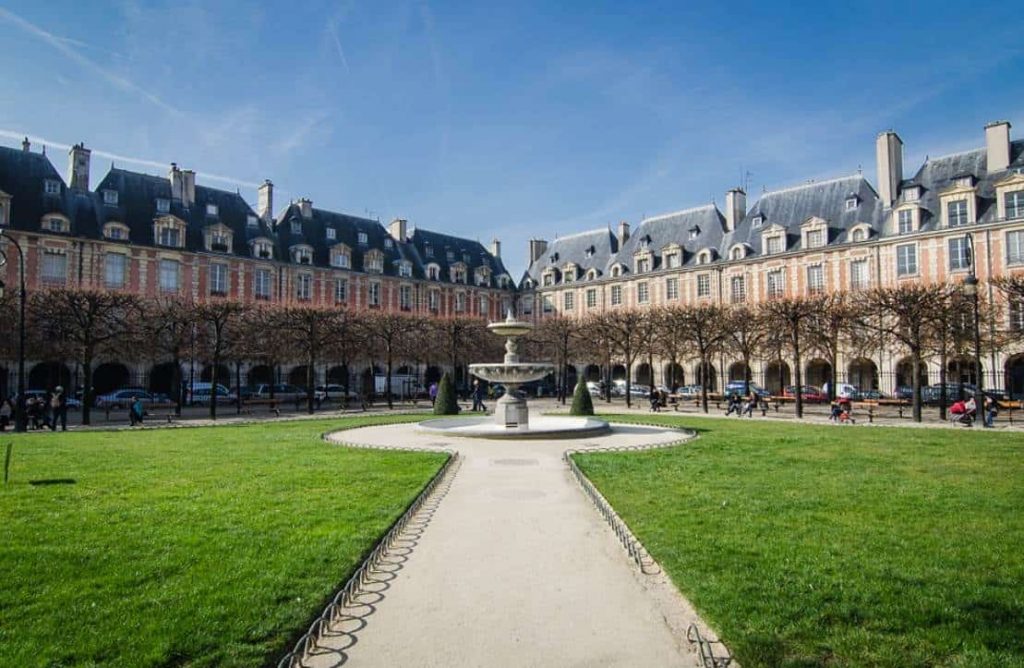
49. Musée de l’Orangerie
The Tuileries Palace was located on the right bank of the River Seine right next to the Place de la Concorde. It was, however, burned to the ground by the Paris Commune in 1871.
One structure that was part of the palace still stands in the southeastern corner of the infamous square, the old Orangerie.
This building was repurposed and turned into a museum, known today as the “Musée de l’Orangerie,” and features some remarkable works of art.
The art gallery is home to a large collection of works by Impressionist and Post-Impressionist paintings, including the likes of Paul Cézanne, Henri Matisse, Amedeo Modigliani, Pablo Picasso, Pierre-Auguste Renoir, Henri Rousseau, Alfred Sisley, and Claude Monet.
The most famous artworks are a collection of 8 murals painted by Monet called “Water Lillies.” These were donated to the museum in 1922 and are a permanent feature of this remarkable museum.
Official website: Musée de l’Orangerie
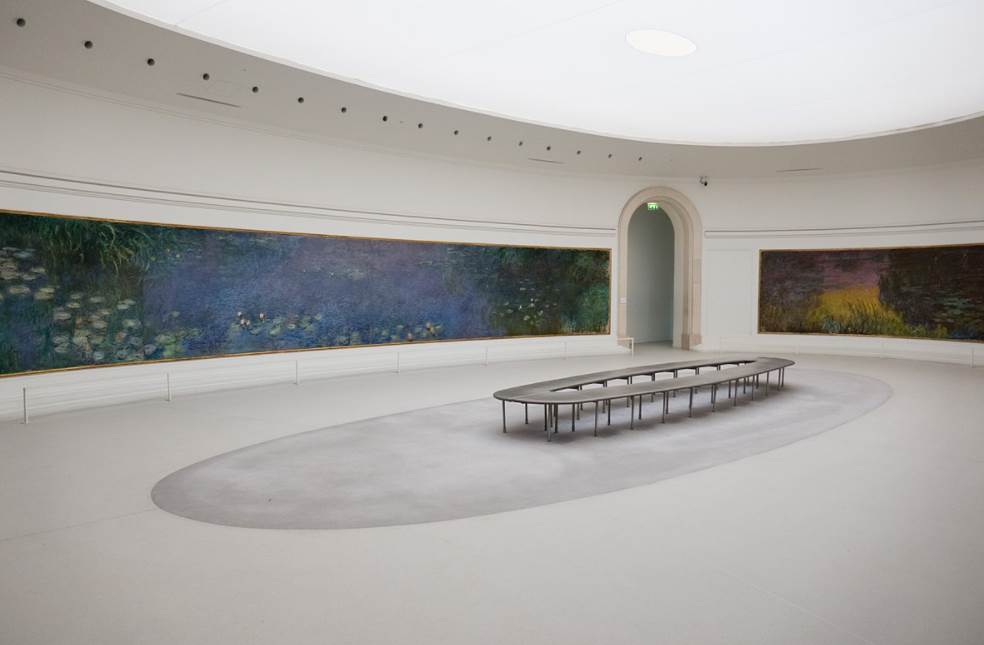
50. Louis Vuitton Foundation building
Inside the huge Bois de Boulogne, the second-largest public park in the city located west of the Eiffel Tower, you can find an incredible building.
The Louis Vuitton Foundation building was constructed between 2006 and 2014 and features an art gallery with contemporary art and a cultural center.
Initially projected to cost €100 million, the ultimate price tag of the building was nearly 8 times that amount upon completion, costing an astounding €790 million.
The glass construction was designed by renowned architect Frank Gehry, best known as the designer of the Walt Disney Concert Hall in downtown Los Angeles, and was inspired by the Grand Palais in central Paris.
The building’s design and the amazing collection of contemporary art make this attraction worth a visit.
Official website: Louis Vuitton Foundation
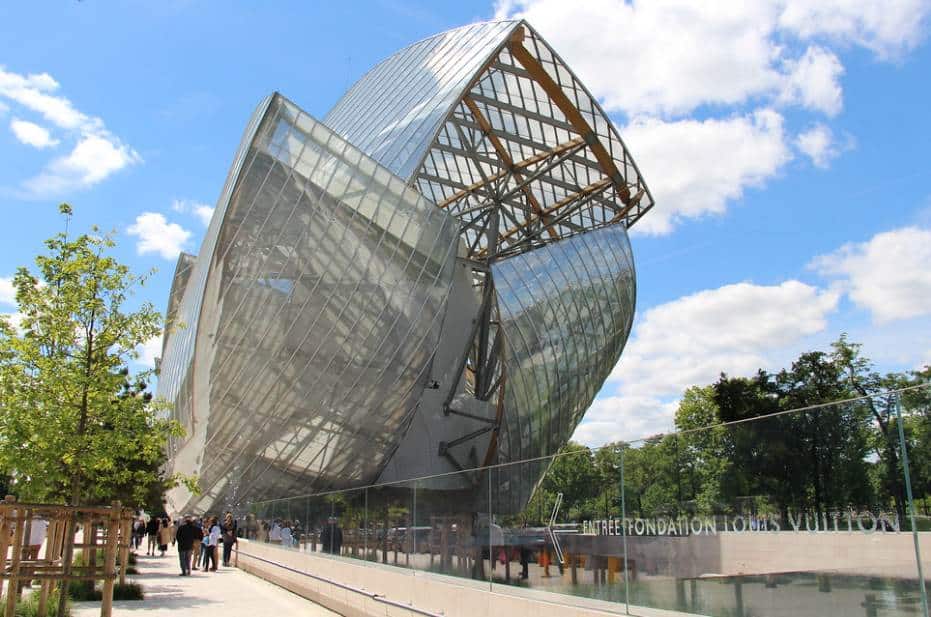
51. Bibliothèque Nationale de France
The “Bibliothèque Nationale de France” or “National Library of France” has a history that dates back to the year 1386. This was the year when King Charles V of France established a library with manuscripts at the Louvre Palace.
The official establishment of the National Library of France happened in the year 1461 and grew to over 300,000 items by the time the French Revolution started in the late 18th century.
Today, the collection of this library consists of over 40.9 million items including 15.7 million books and 900,000 maps, incredible numbers indeed.
These items are held in 4 different locations in Paris, including the “Bibliothèque François-Mitterrand,” established by the old French president in the late 1980s.
Especially the Richelieu Site, located just north of the Louvre Museum, with its magnificent reading room, is an enjoyable spot to read a book in Paris.
Official website: François-Mitterand Library
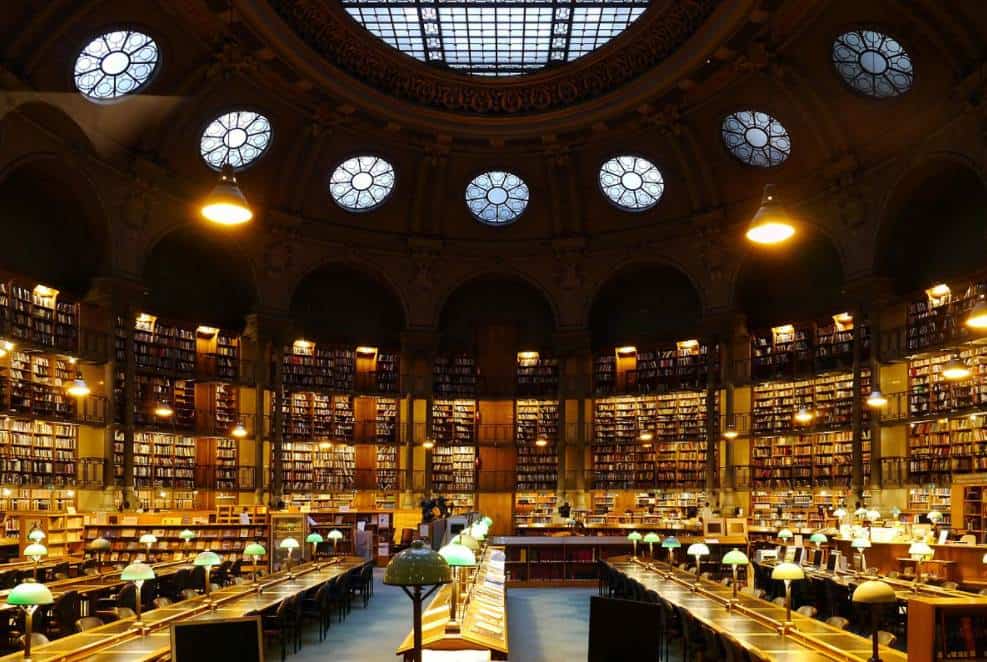
52. Pont des Arts
You won’t see any cars drive across this bridge in the heart of Paris because the Pont des Arts is a pedestrian-only bridge.
The original bridge on this location was constructed on the orders of Napoleon Bonaparte during the First French Empire. It connects the Institut de France in the south to the central square of the Louvre Palace in the north.
It was the first steel bridge in Paris and was completed between 1802 and 1804. The name of the bridge refers to the “Palais des Arts,” the name that was given to the Louvre Palace during this period in history.
This original bridge had suffered severely during both World Wars and was rendered useless after a boat rammed into it in 1979.
The current bridge a constructed between 1981 and 1984 and is world-famous because of tourists attaching “lovelocks” to it, a practice that isn’t exactly appreciated by the local government due to the enormous strain it causes to the bridge.
Let’s just take a selfie to capture the moment that you walked across this bridge in central Paris. It’s quite a place to do so, don’t you think?
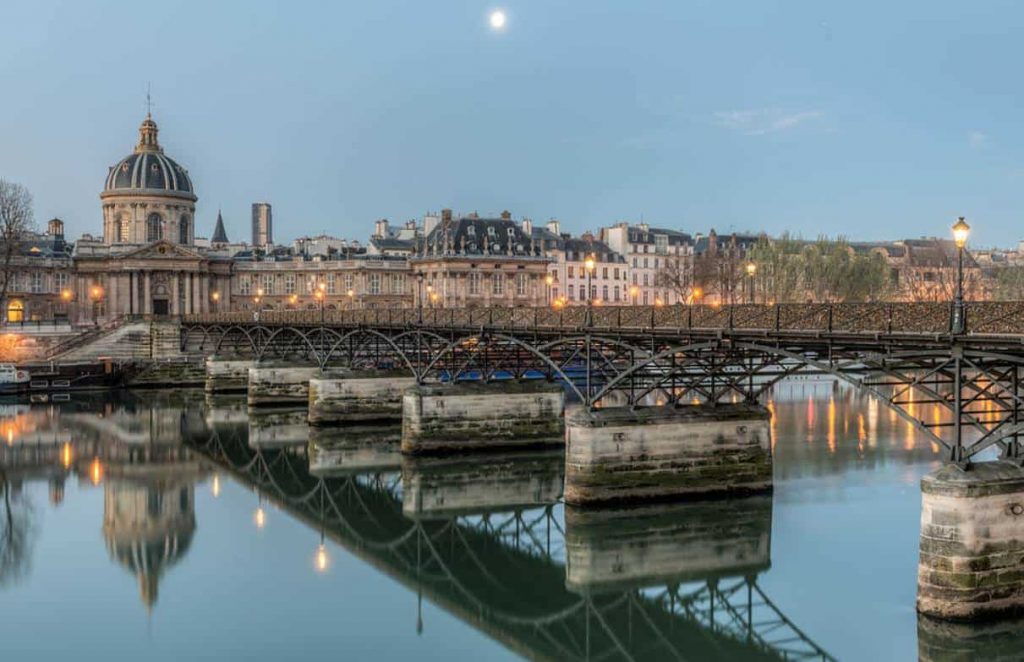
53. La Villette
The third-largest park in Paris covers an area of 55.5 hectares (137 acres) and is called the “Parc de la Villette.”
It’s situated in the northeastern section of the city, just east of Montmartre Hill and the Sacré-Coeur, in the 19th arrondissement of the city.
This isn’t just a park to enjoy a nice stroll because it features numerous important cultural venues and the largest science museum in Europe called the “Cité des Sciences et de l’Industrie” or the “City of Science and Industry.”
Apart from the 3 major concert venues within the park’s boundaries (the Cité de la Musique, the Philharmonie de Paris, and Le Zénith), it’s also home to the “Conservatoire de Paris,” a college of art and music originally founded in 1795.
The most prominent landmark in the park is a huge geodesic dome that has a diameter of 36 meters (118 feet).
This remarkable structure features 6,433 polished stainless steel triangles. Even though it merely looks like a piece of art to decorate the area, it features a movie theater with a screen of 1,000 square meters (11,000 square feet) inside.
Official website: La Villette
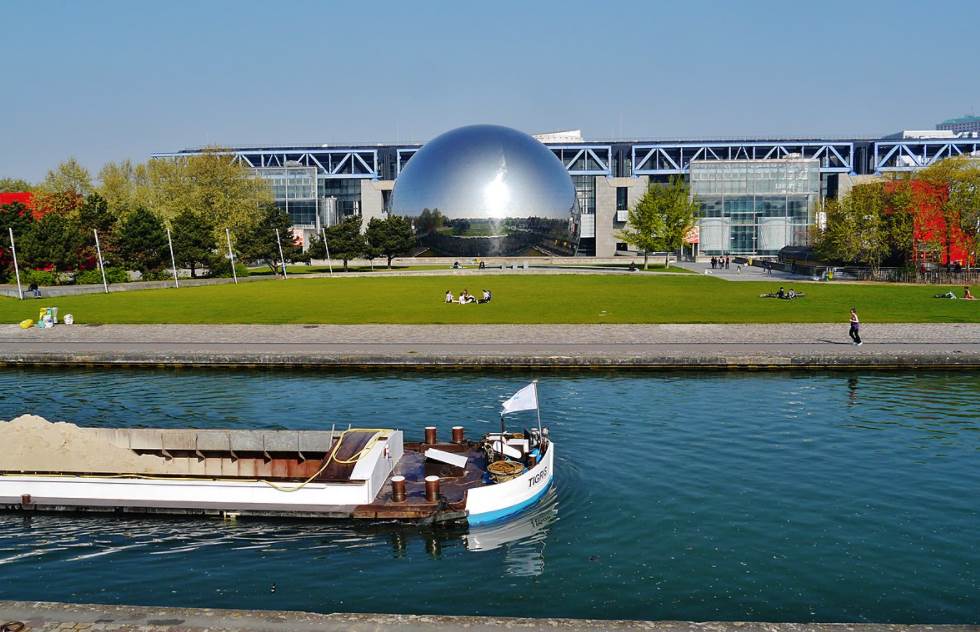
54. Cluny Museum
The Middle Ages, those were the days, weren’t they?
Well, not really, even though a lot of fascinating art was created during this period in history. The “Musée de Cluny” or “Cluny Museum” is a museum dedicated to medieval art.
The building in which the museum is housed is located in the Latin Quarter of the city and partially uses an ancient Roman bathing complex referred to as the “Thermes de Cluny.”
Yes, that’s right, some items are displayed in the Frigidarium (cold room) of an entertainment venue built when the Roman Empire was still doing great.
This in combination with a large collection of items dating back to medieval times in Europe makes this an amazing museum to visit.
Official website: Musée de Cluny
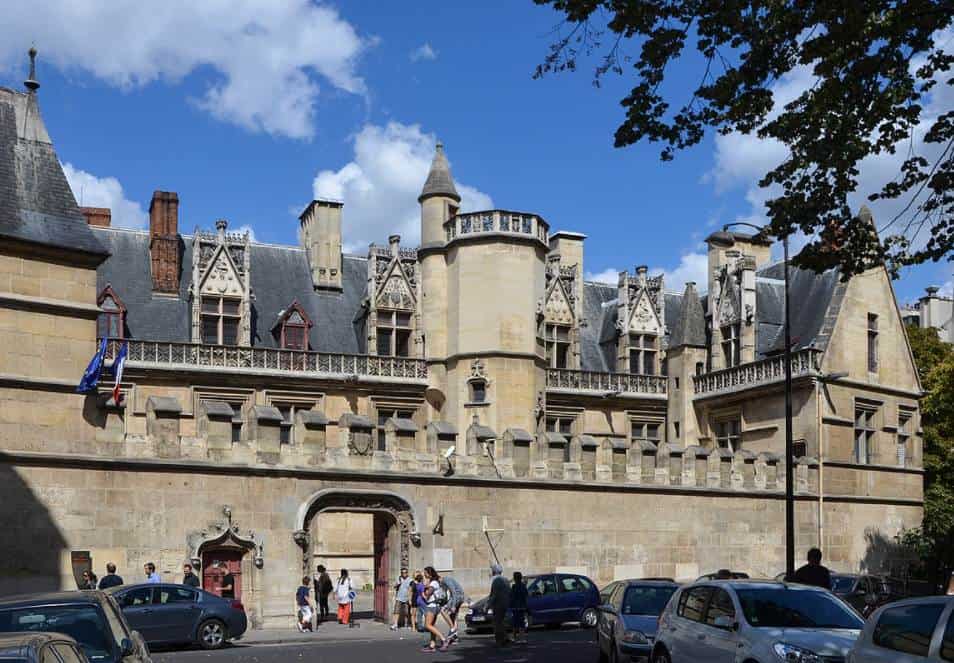
The Musée Carnavalet is located in two historic buildings that were joined together called the Hôtel Carnavalet and the Hôtel Le Peletier de Saint Fargeau.
The museum first opened its doors in the year 1880 and features a painting collection that ranges from the Renaissance to the modern days.
The main exhibits inside the museum allow you to see the complete history of the city. This starts from a village called Lutèce that was inhabited by the Parisii tribes to the sprawling metropolis it is today.
The collection size is enormous as it features over 580,000 items, including 2,600 paintings, 20,000 drawings, and 300,000 engravings.
This is the place to go if you are interested in the history of Paris.
Official website: Musée Carnavalet
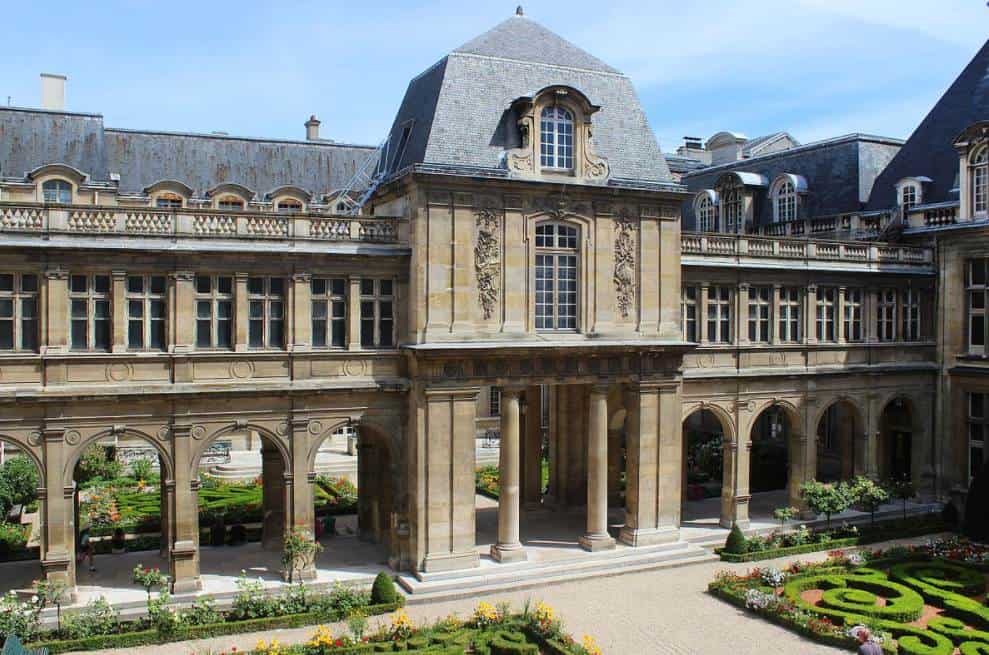
56. Coulée Verte René-Dumont
If you want to enjoy a nice hike just east of the historical heart of the city, then you’ll hardly find a better place than the Coulée Verte René-Dumont.
This “Promenade plantée,” a walkway lined with trees, was built on top of the old Vincennes railway which became obsolete.
The result is a linear park with a length of 4.7 kilometers (2.9 miles) that travels continuously through the city.
Some areas of the path are elevated and provide great views of the city. This makes it an amazing place to enjoy a relaxing stroll while you’re in Paris.
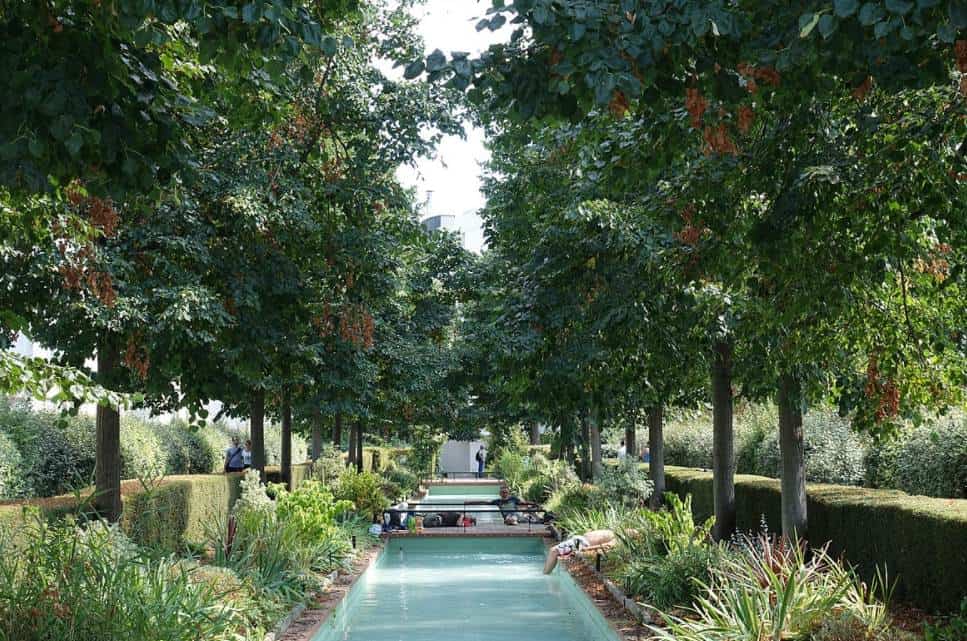
57. Musée Marmottan Monet
If you’re a fan of Impressionist and Post-Impressionist art, then there’s a heavenly place for you in Paris.
The Musée Marmottan Monet features over 300 paintings of these art movements. The most famous painting of the collection is called “Impression, Sunrise” (1872), a painting from which the names of both movements were derived.
The layout of the museum looks very similar to that of the Musée the l’Orangerie. The museum was established in 1934 and features works of Monet, Edgar Degas, Édouard Manet, Alfred Sisley, Camille Pissarro, Paul Gauguin, Paul Signac, and Pierre-Auguste Renoir.
The museum is located just east of the Bois de Boulogne and just west of the Eiffel Tower in the 16th arrondissement of the city.
Official website: Marmottan Monet
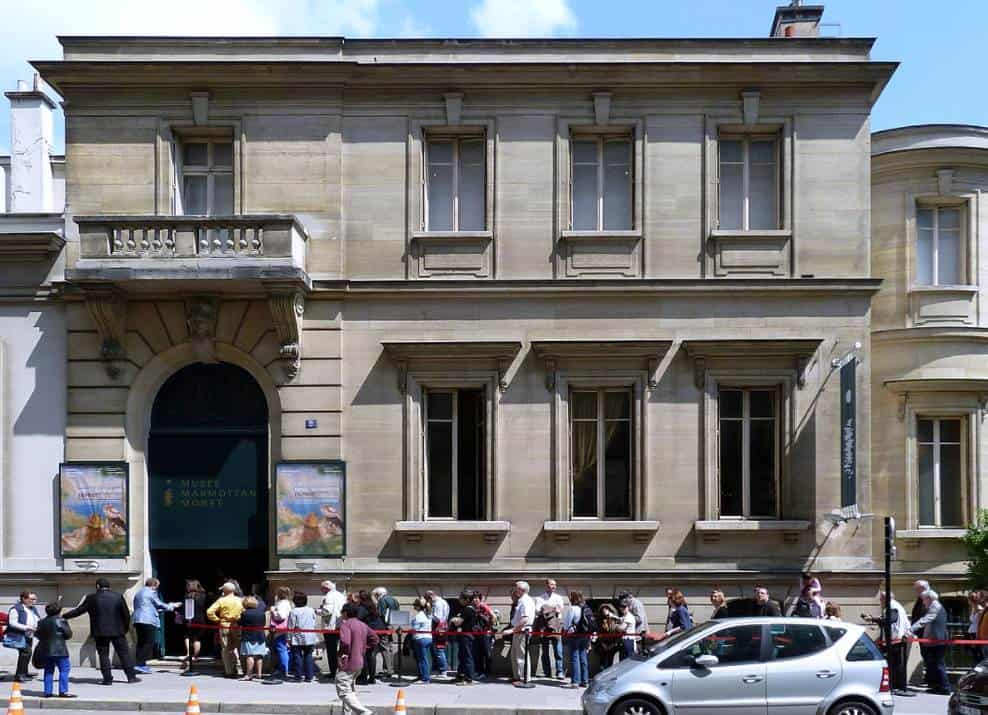
58. Bois de Boulogne
While the biggest park in Paris is located in Vincennes in the eastern outskirts of the city, the second-biggest isn’t that much smaller.
The Bois de Boulogne is located in the western part of Paris and covers an area of 845 hectares (2088 acres). That’s the equivalent of 2 and a half the size of Central Park in New York City, to give you an idea about the size of this green area.
his historic park was yet again established by Emperor Napoleon III in the 19th century and was officially turned into a public space in 1852.
It features an English-style garden with multiple lakes, the small Château de Bagatelle, and a children’s amusement park called the Jardin d’Acclimatation.
In the southeastern corner of the park, there’s also a huge horse racing track called the Hippodrome de Longchamp. The greenhouses of Auteuil are located in a botanical garden that features over 100,000 plants.
Just south of the park you can find the tennis complex in which the annual French Open tennis championships are held. This tournament is known as “Rolland Garros.”
This means that there’s more than enough to do within the boundaries of this huge park to spend an enjoyable afternoon in Paris away from the busy streets.
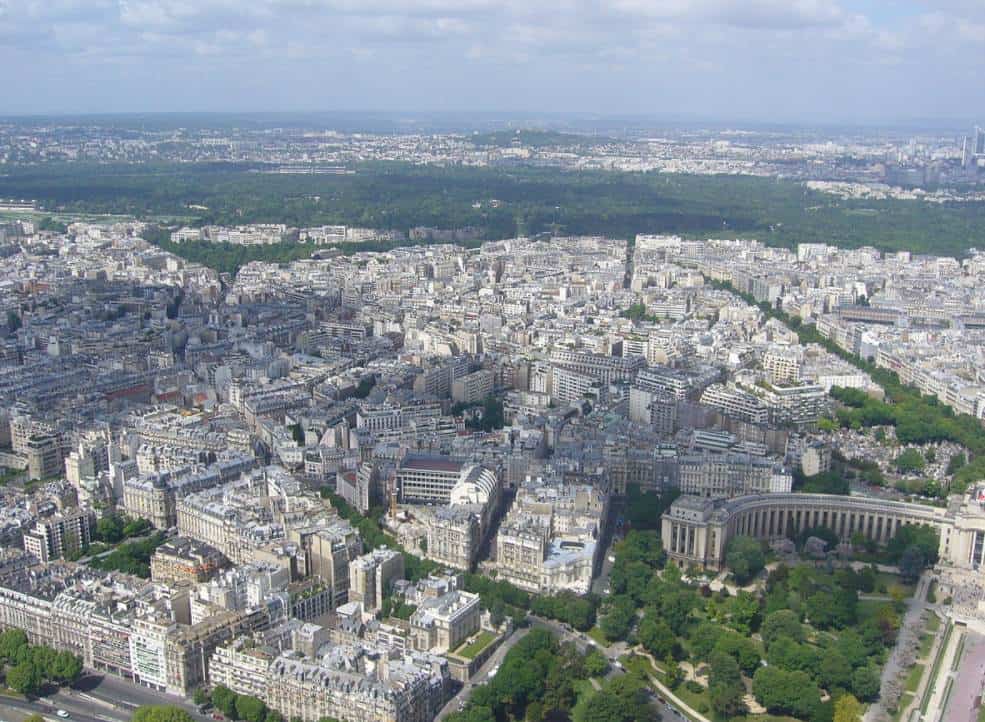
59. Rue Crémieux
Just one block south of the Coulée Verte René-Dumont you can find one of the most picturesque streets in the city, and that’s quite a statement to make.
The Rue Crémieux is located in the 12th arrondissement and was created in the year 1857. It features extremely colorful houses and the street is paved in cobblestones.
The street was known as the “Rue Millaud” between 1865 and 1898 but was renamed in honor of French politician and Minister of Justice Adolphe Crémieux (1796-1880).
Even though it looks like an amazing place to take pictures, the residents of the street don’t appreciate the hoards of tourists taking selfies. Walking down this colorful street should be on your list, though, while you’re in the city.
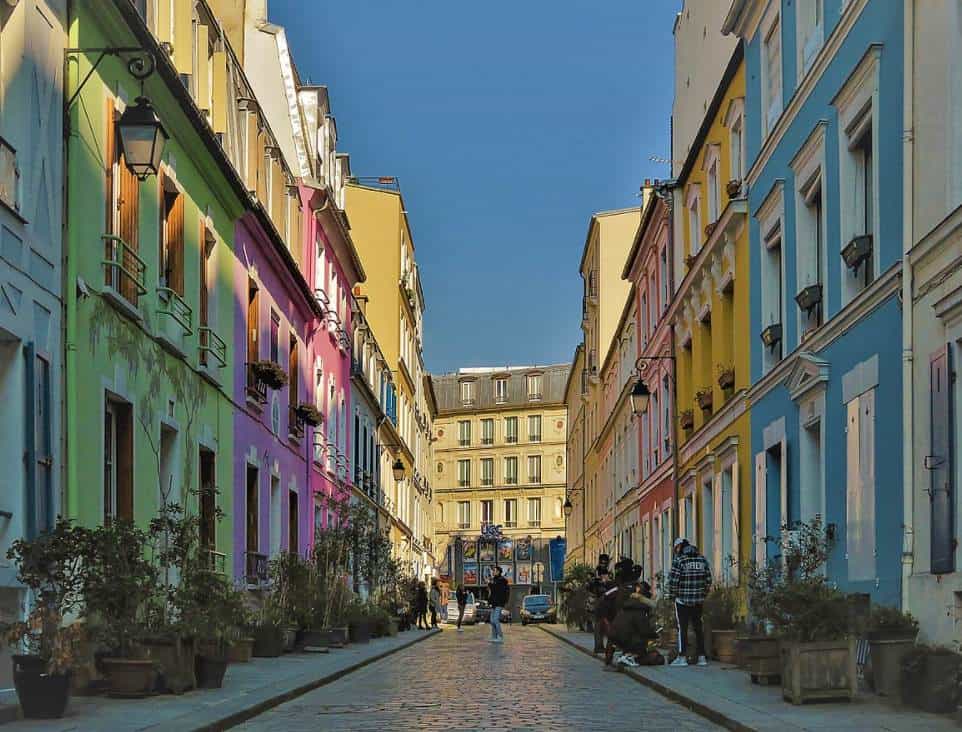
60. Rue de Rivoli
Even though the Champs-Élysées is without a doubt the most famous avenue in the city, there are plenty more amazing streets in this fascinating city.
One of these is the Rue de Rivoli, a street established by Napoleon Bonaparte that he named in honor of his first major victory at the Battle of Rivoli.
During this battle on January 14 and 15 of the year 1797, he defeated the Austrian army in a small town called Rivoli in what was then the Republic of Venice in modern-day Italy.
The street runs all across the north wing of the Louvre Museum and starts on the northern side of the Tuileries Garden, piercing the historic heart of Paris.
It also crosses the Marais district which features numerous aristocratic mansions. This means that this street is full of amazing buildings featuring stylish architecture.
The Places des Pyramids is located right in the middle of the street and features a gilded statue of historic figure Jeanne d’Arc which was inaugurated in 1874.
